
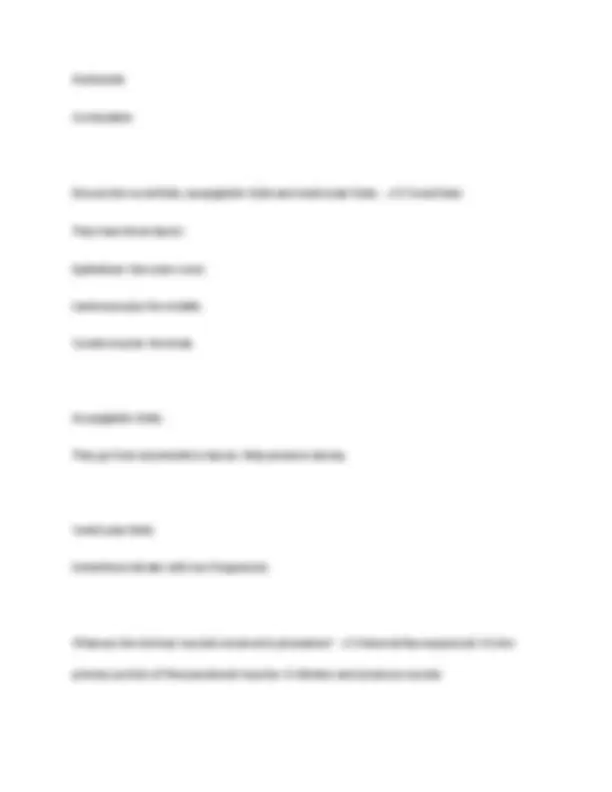
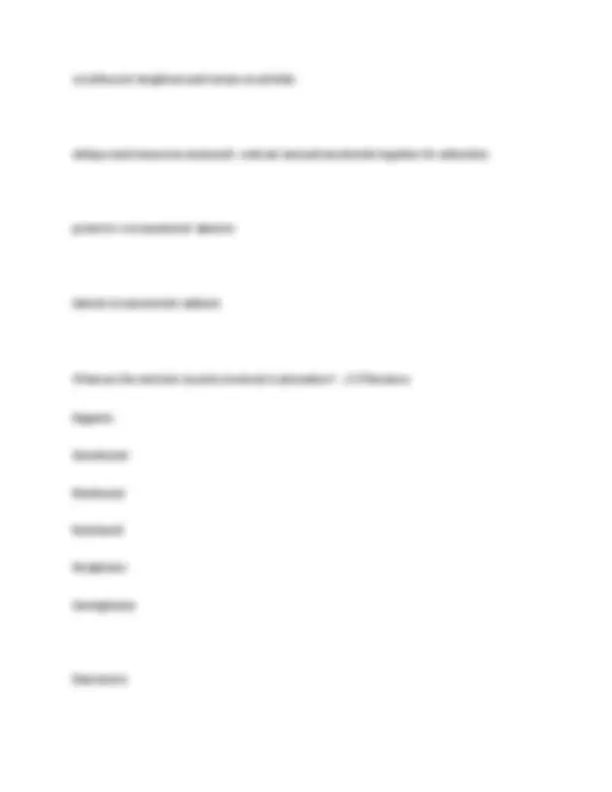
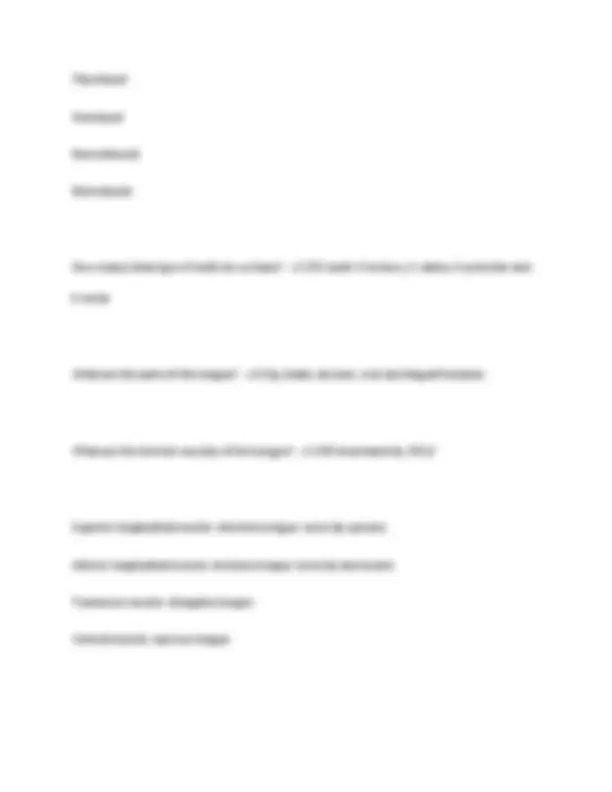
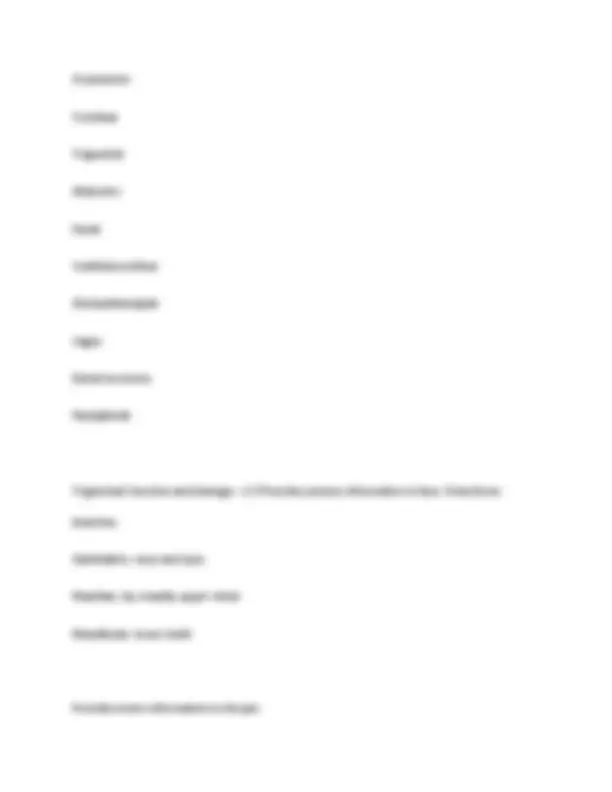
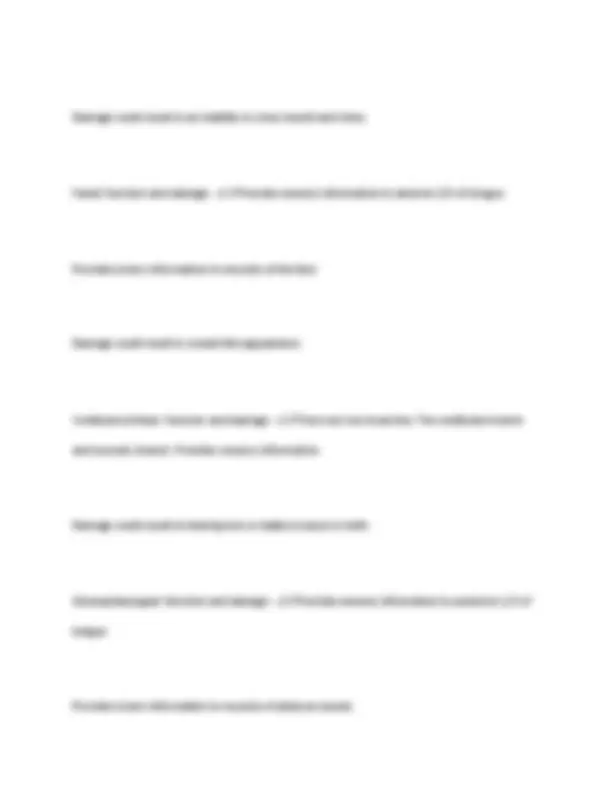
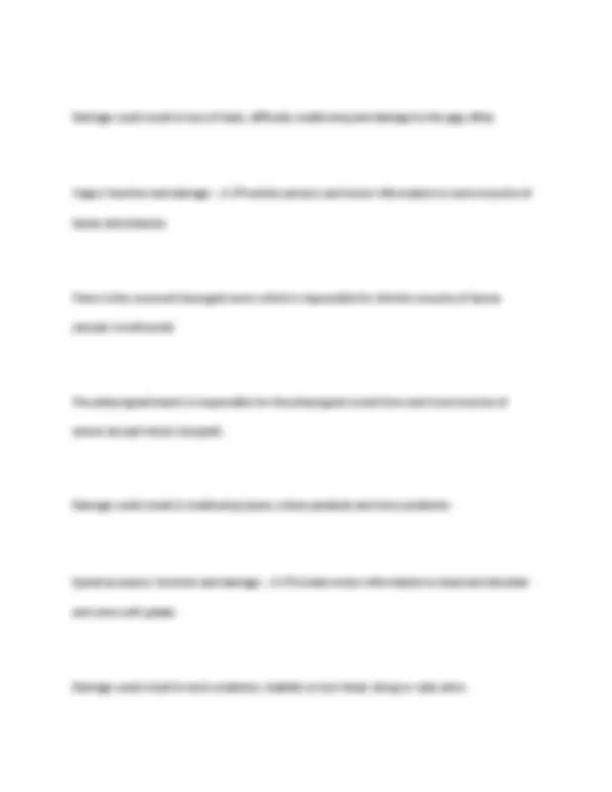
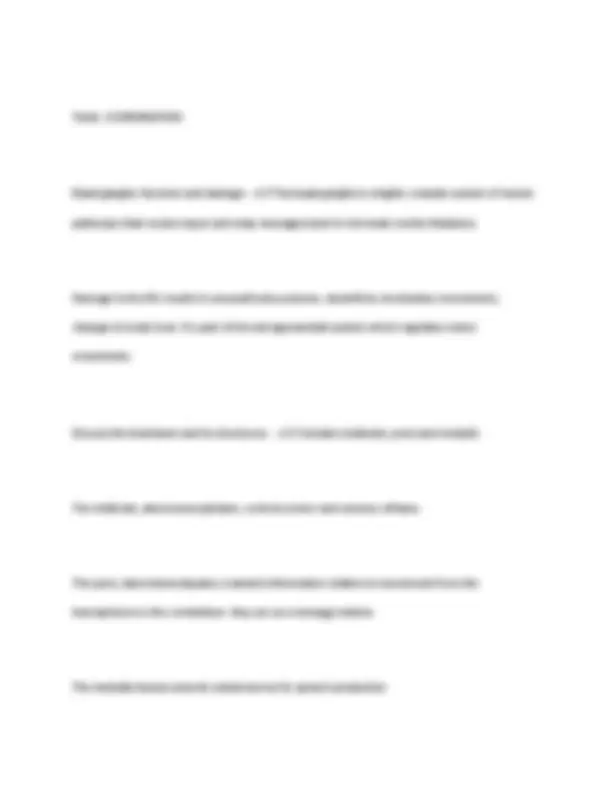
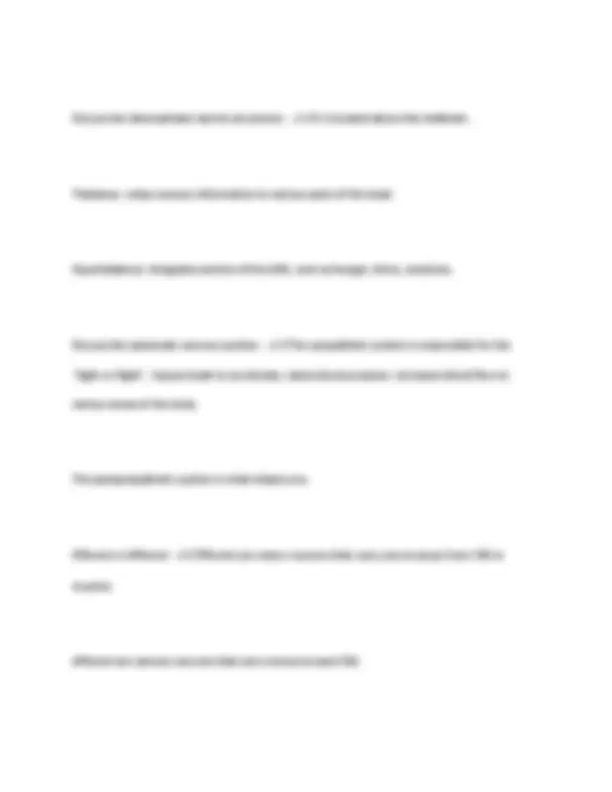
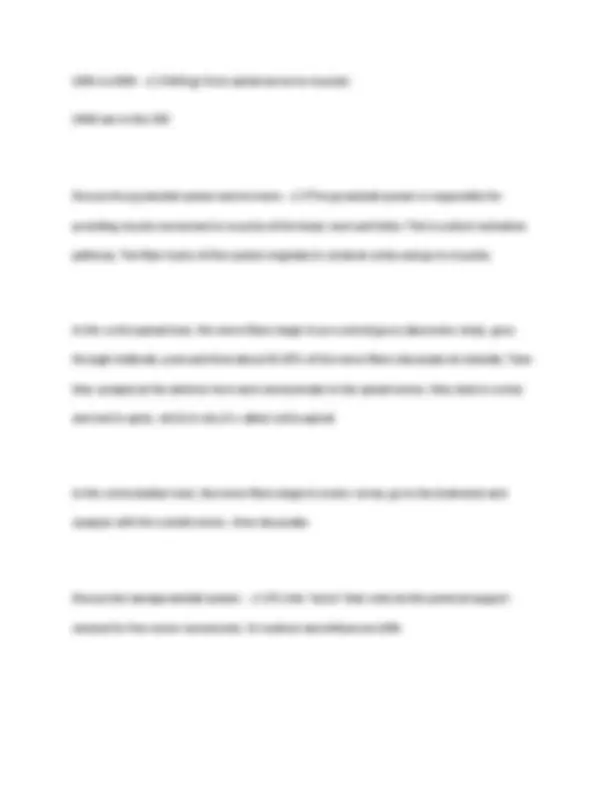
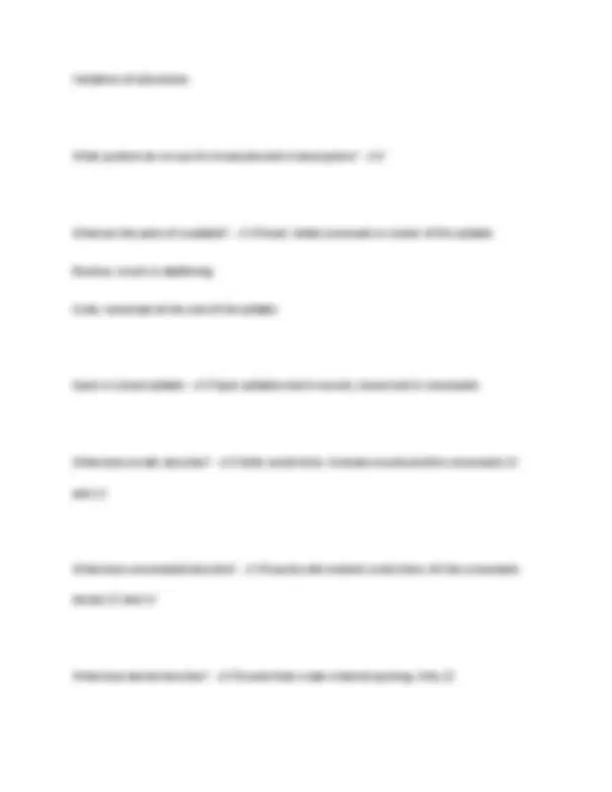
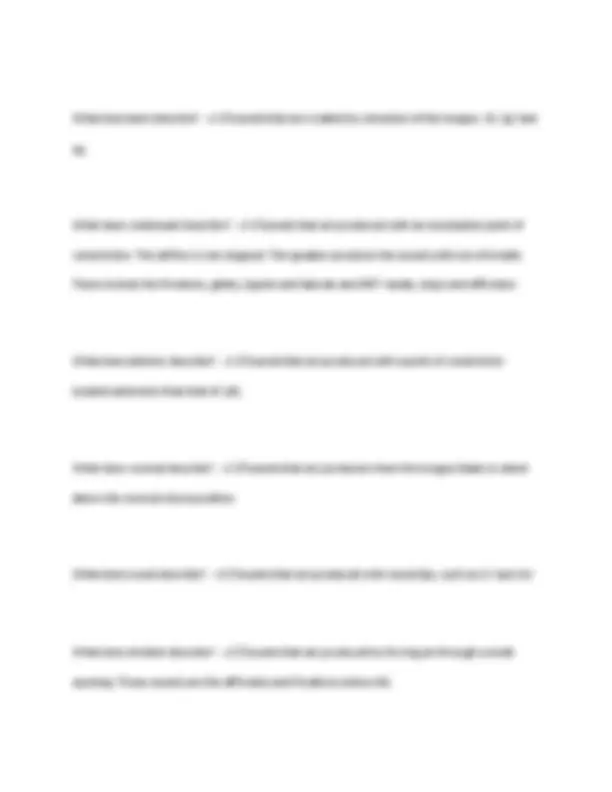
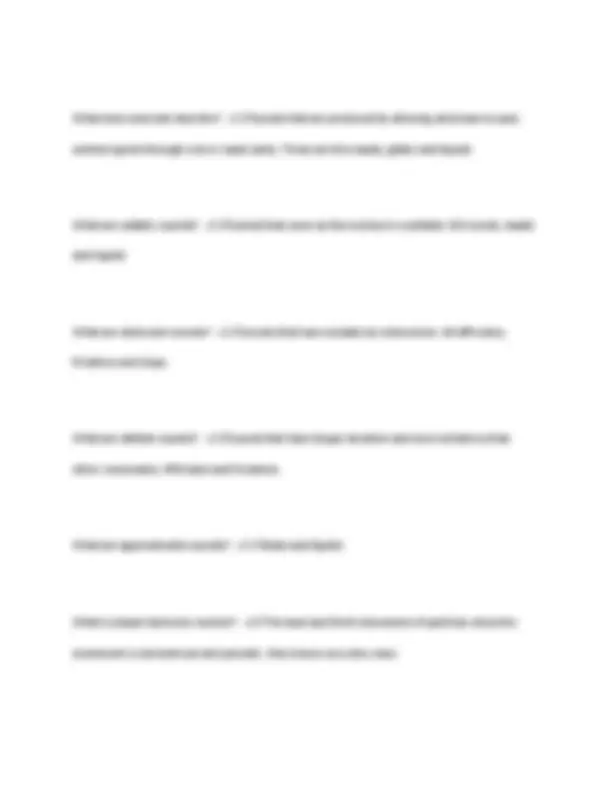
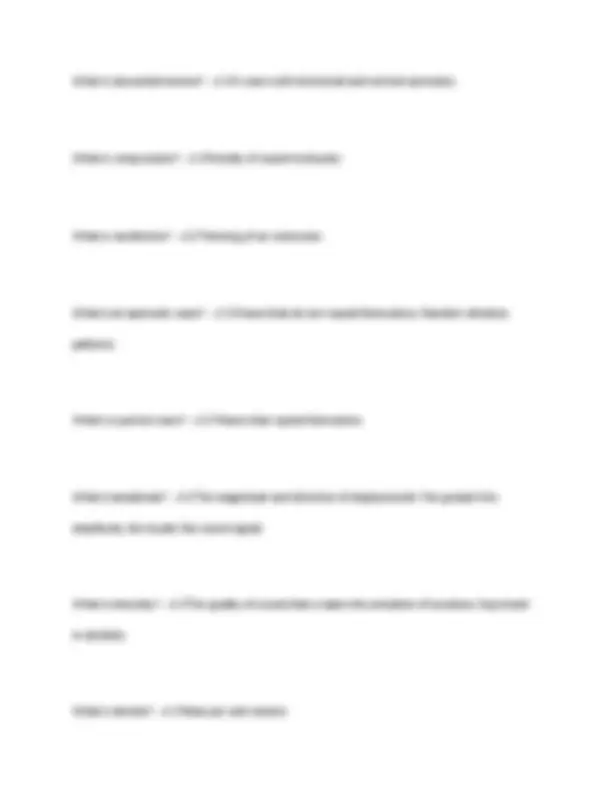
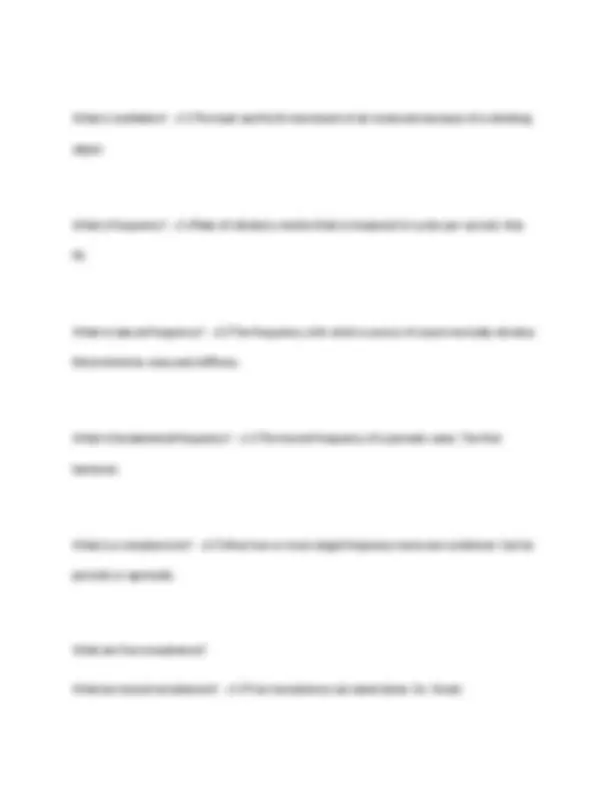
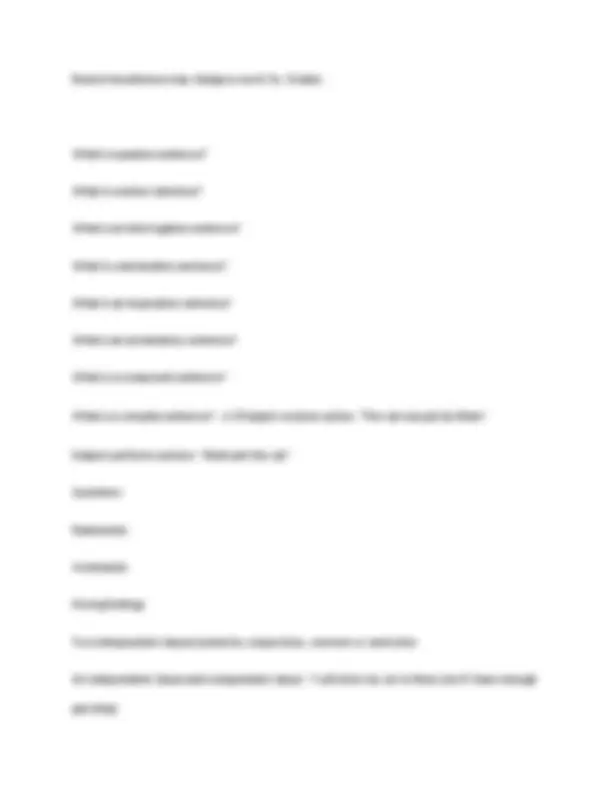
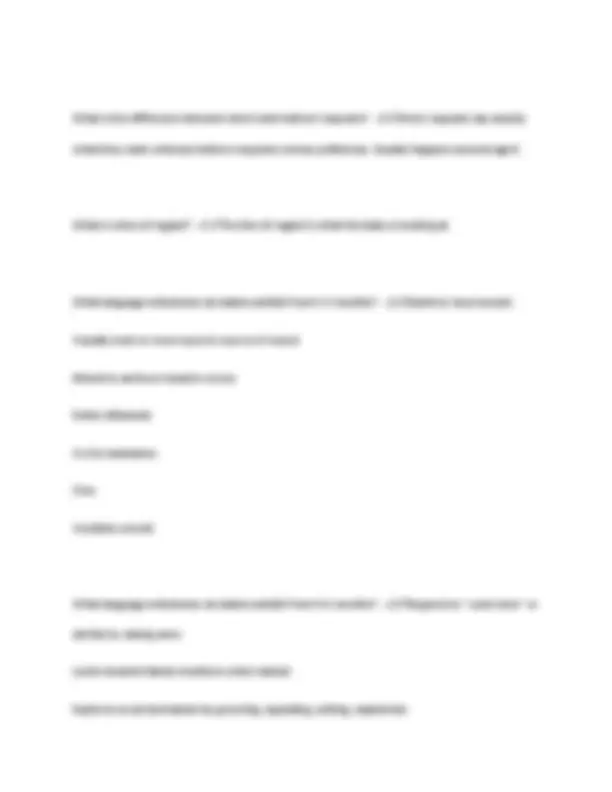
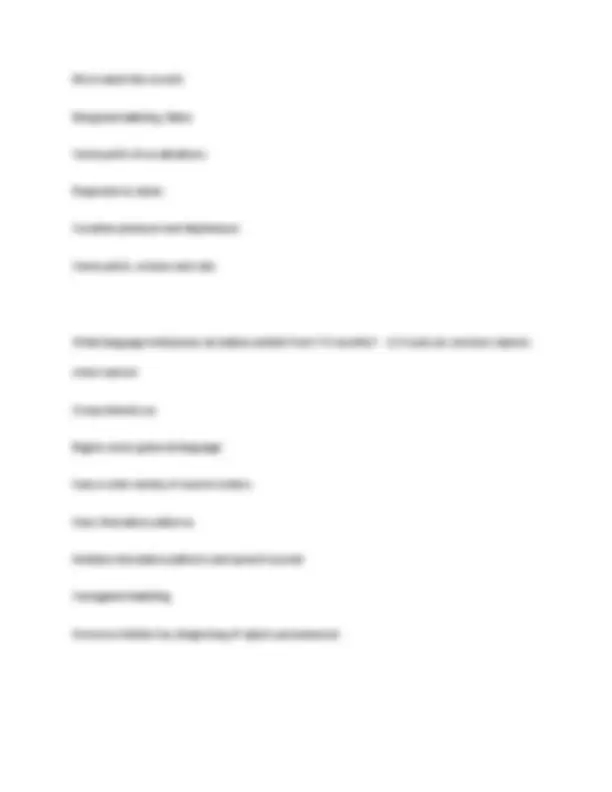
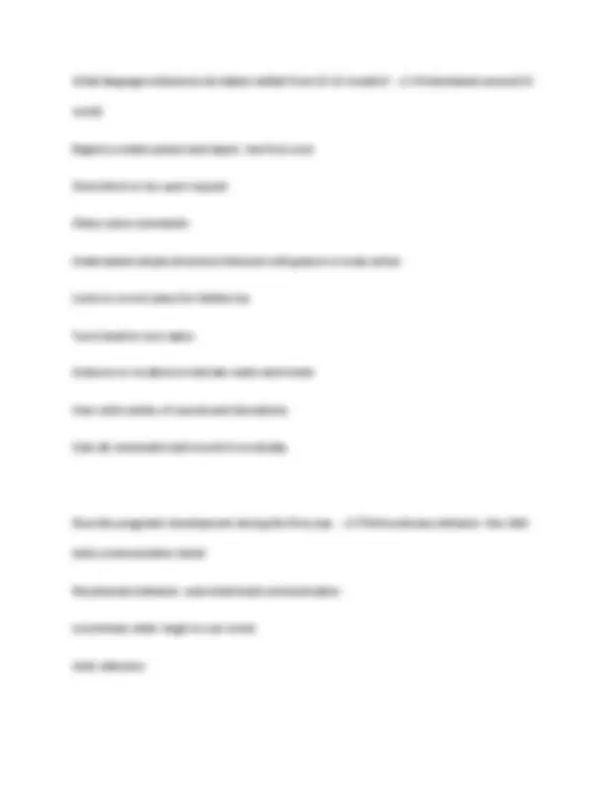
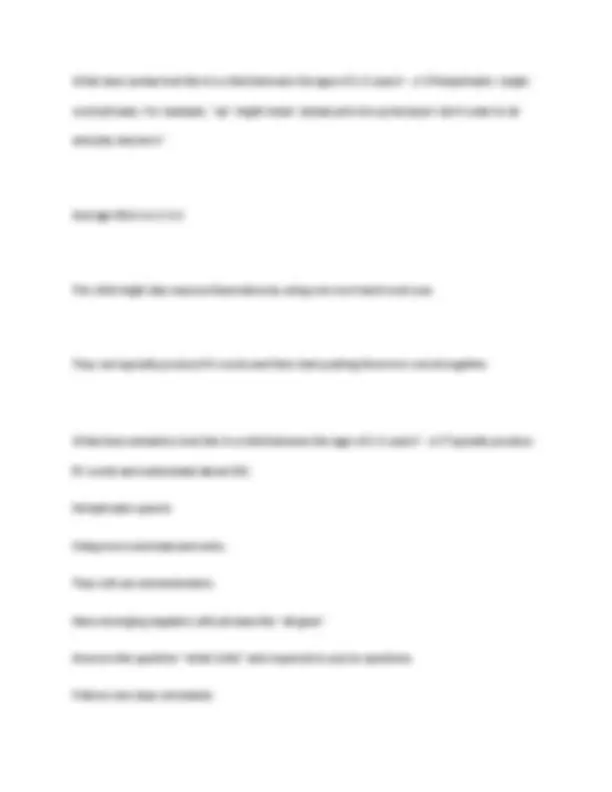
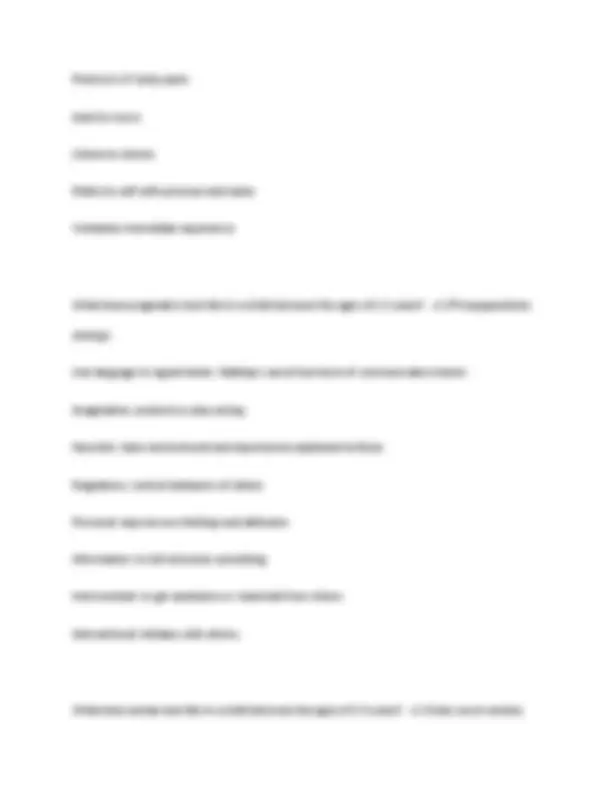
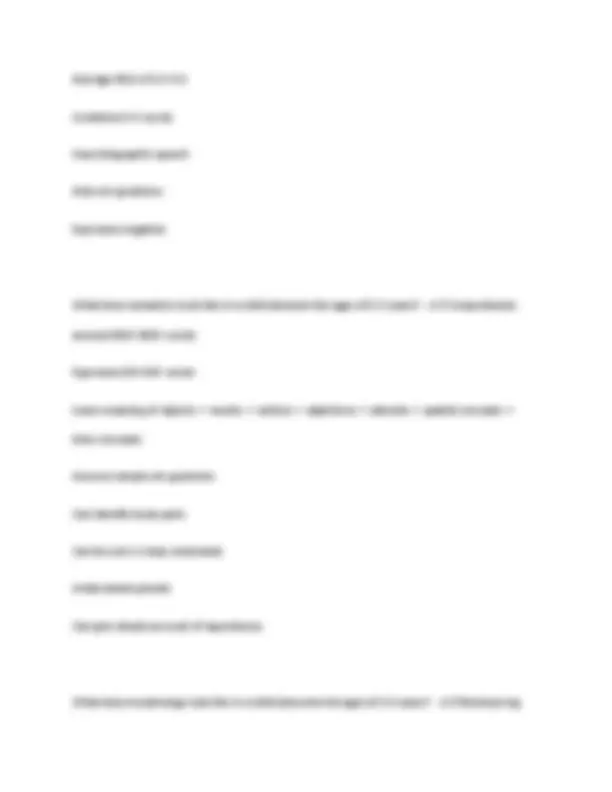
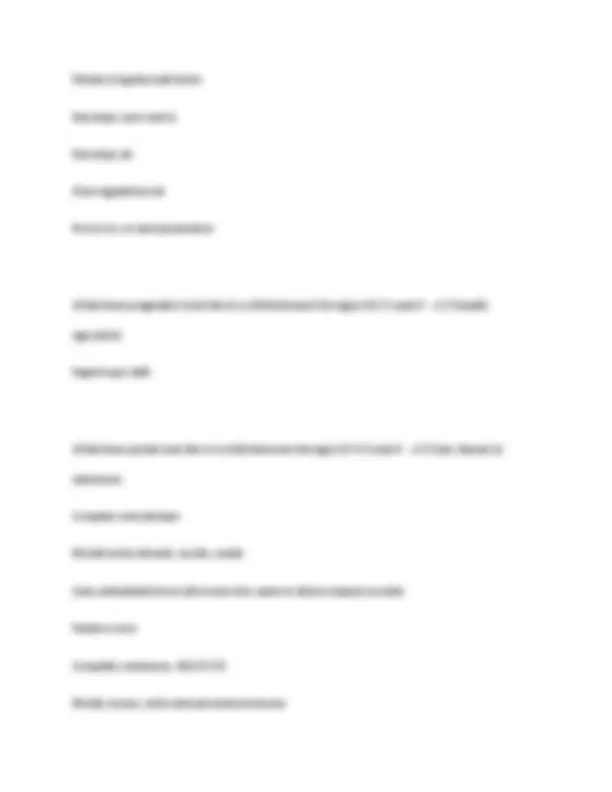

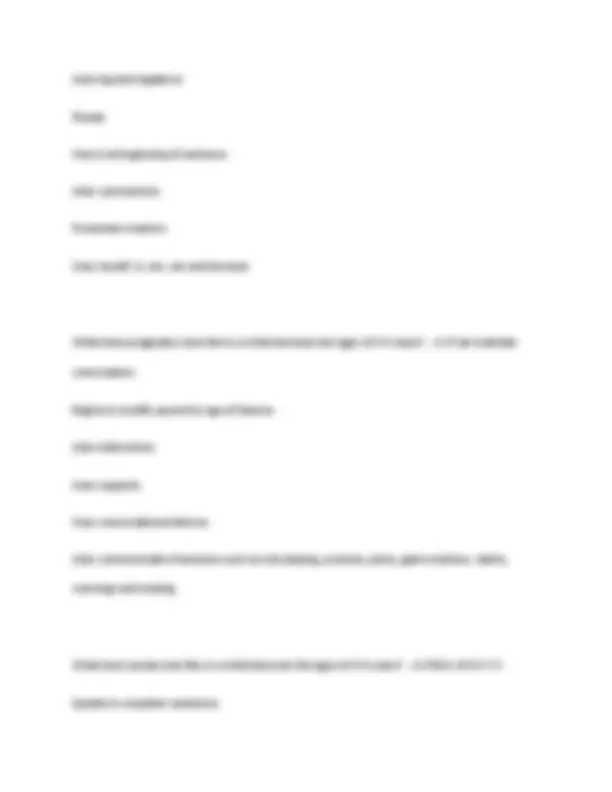
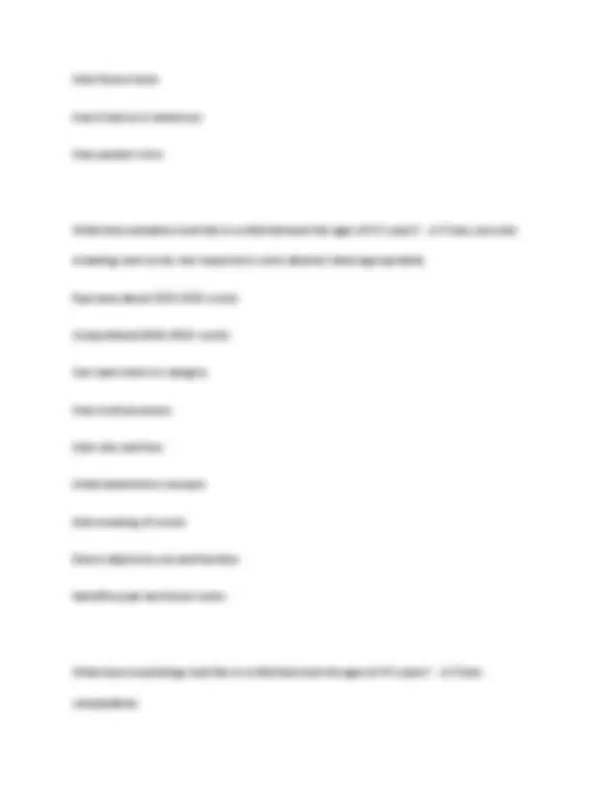
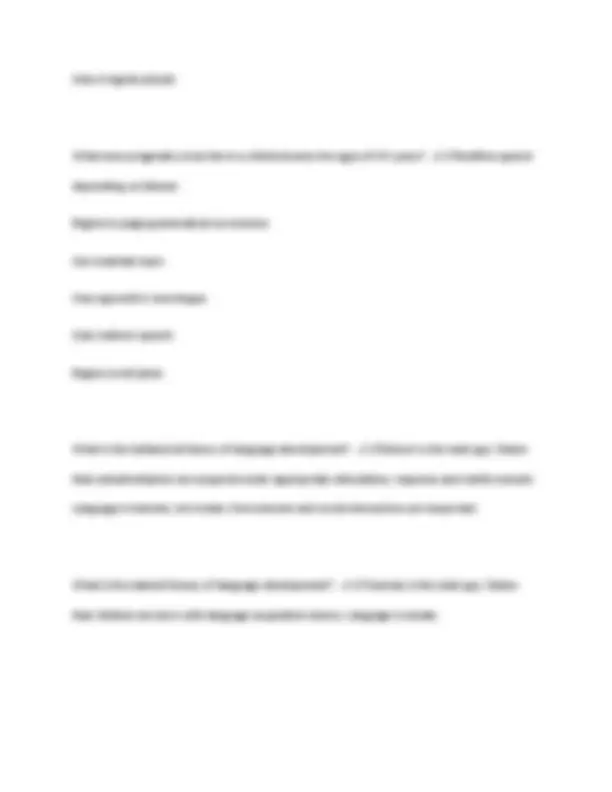
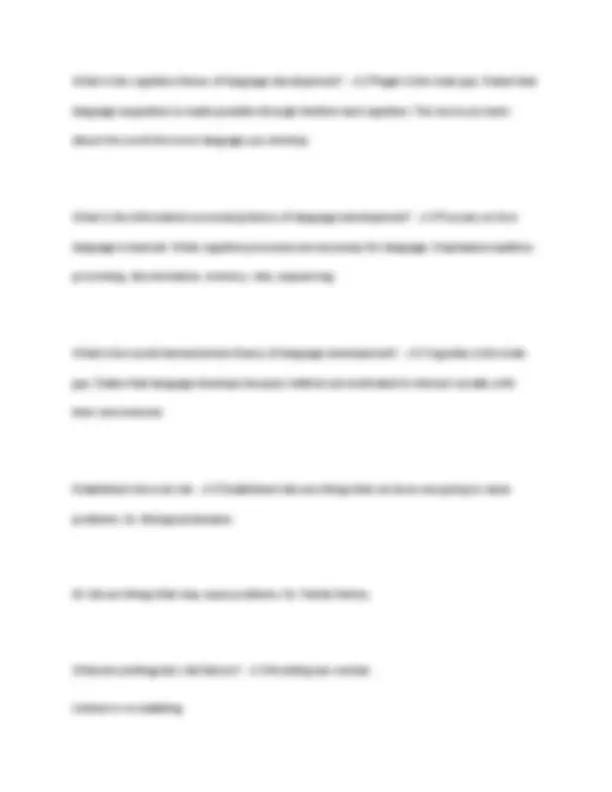
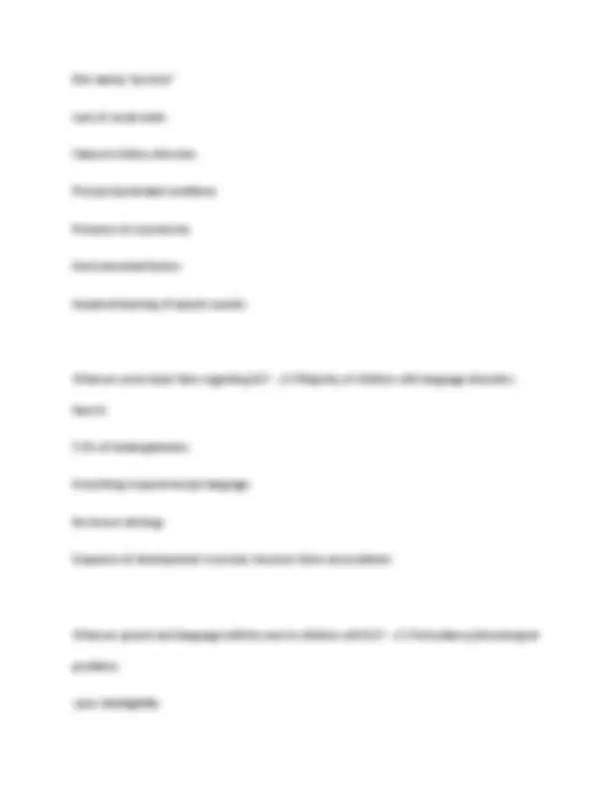
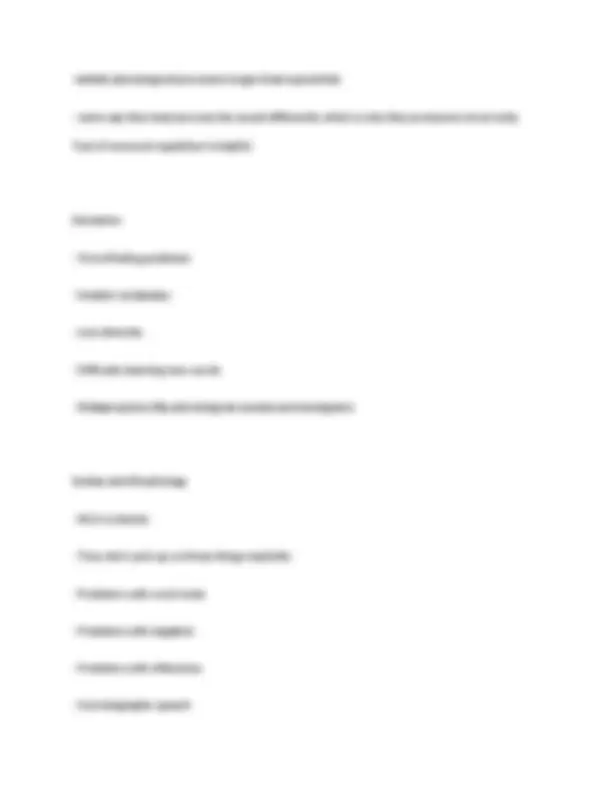
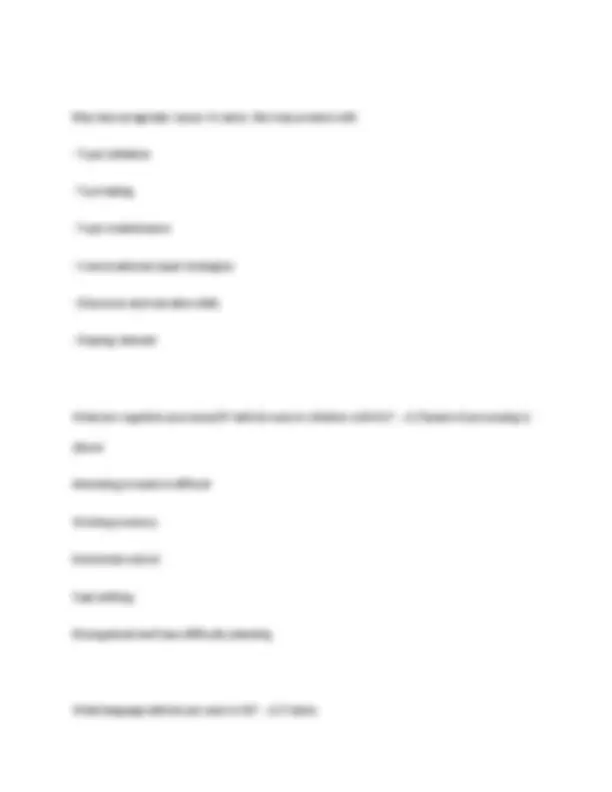
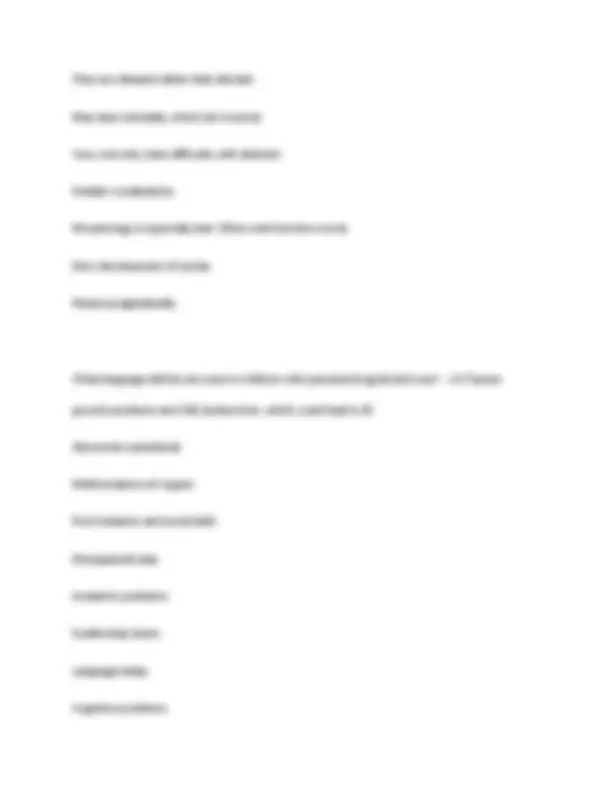
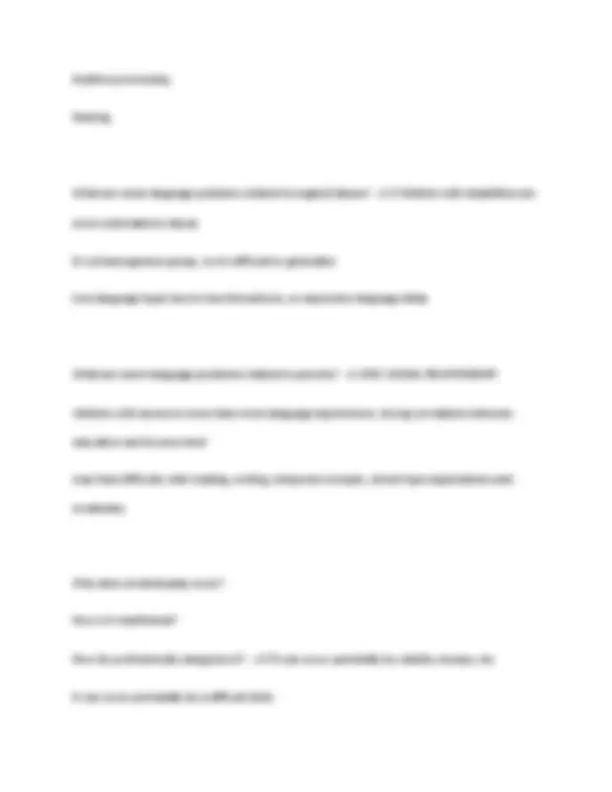
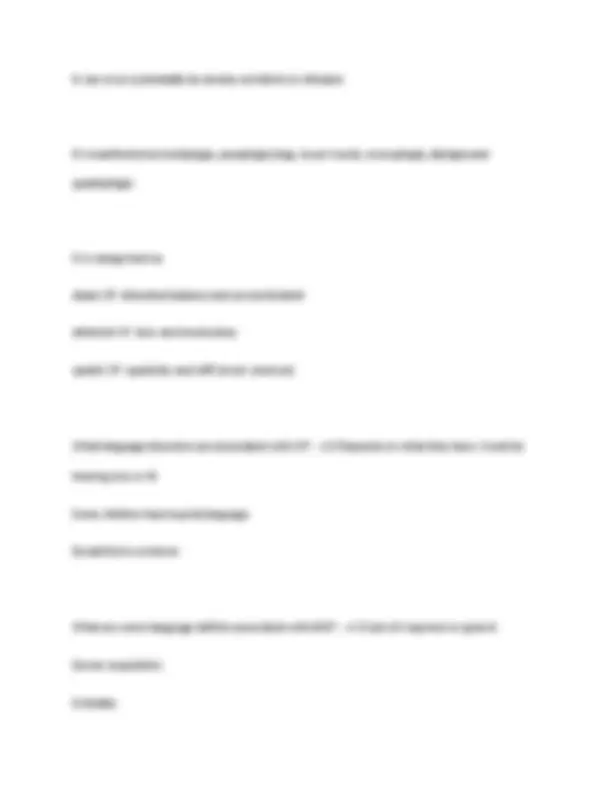
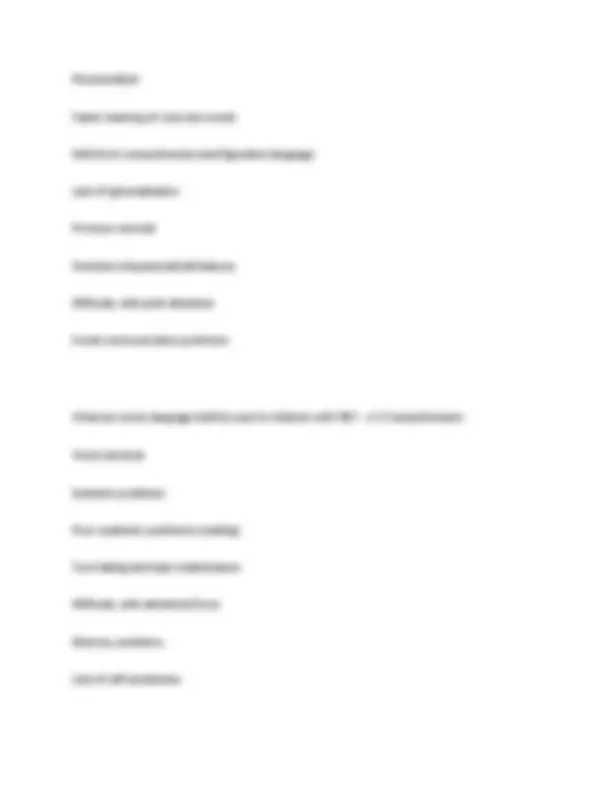
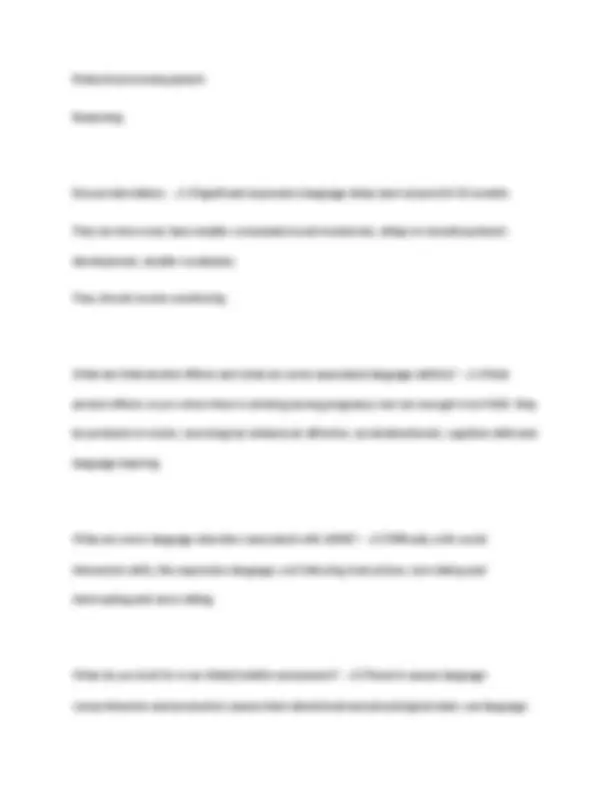
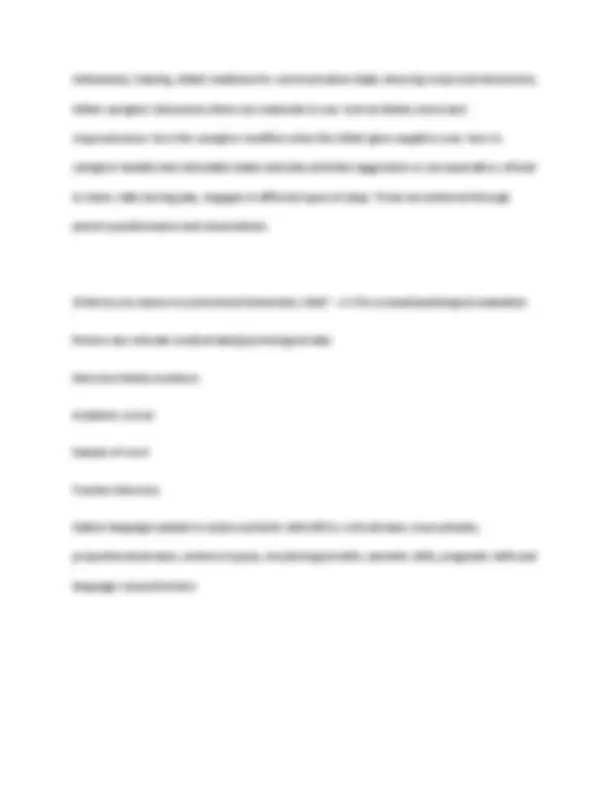
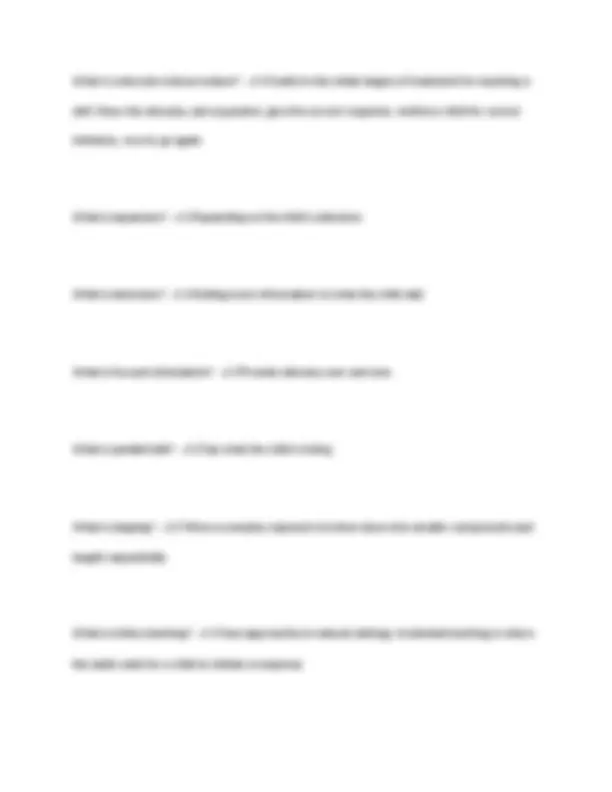
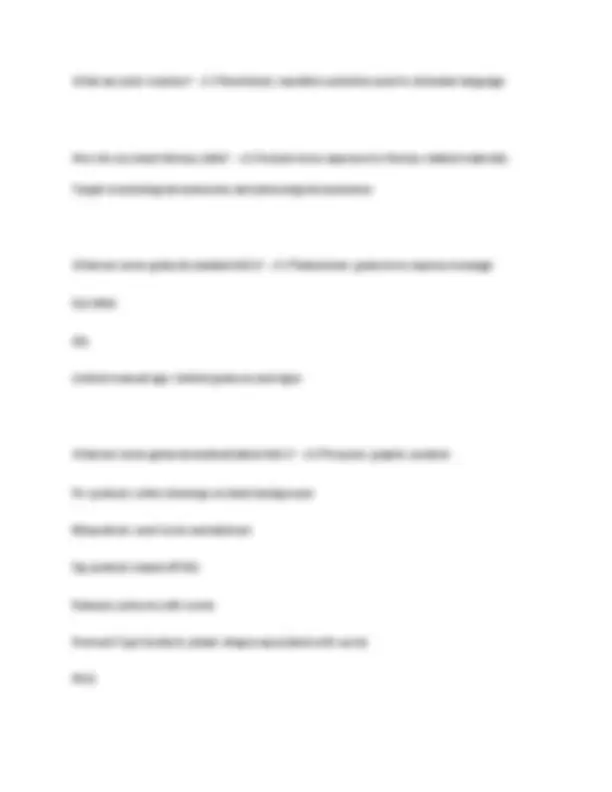
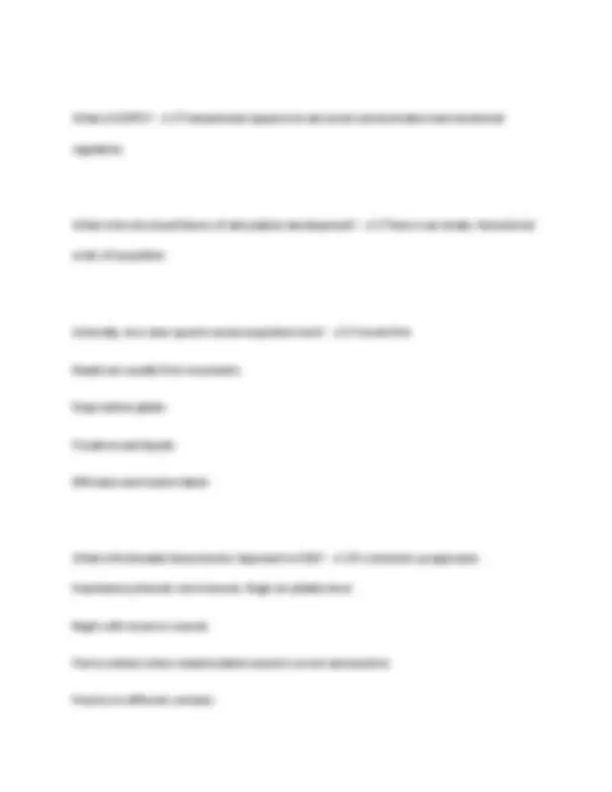
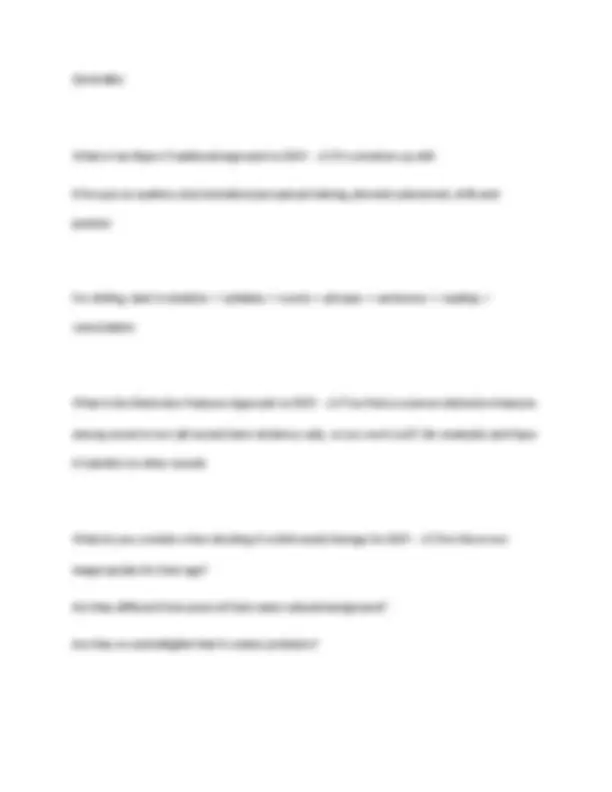
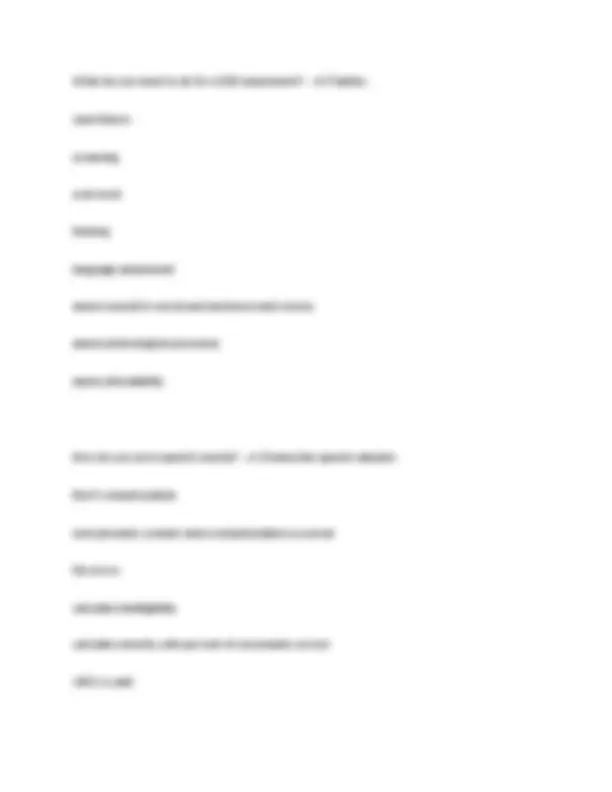
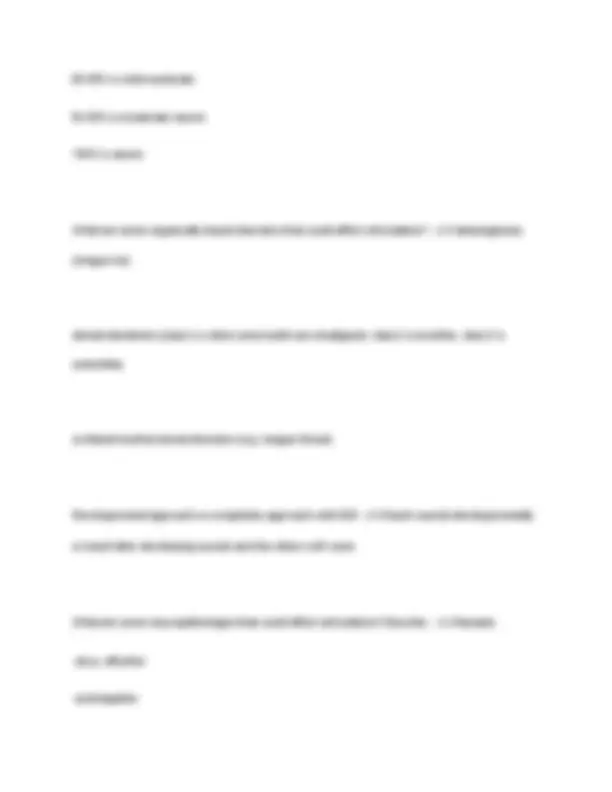
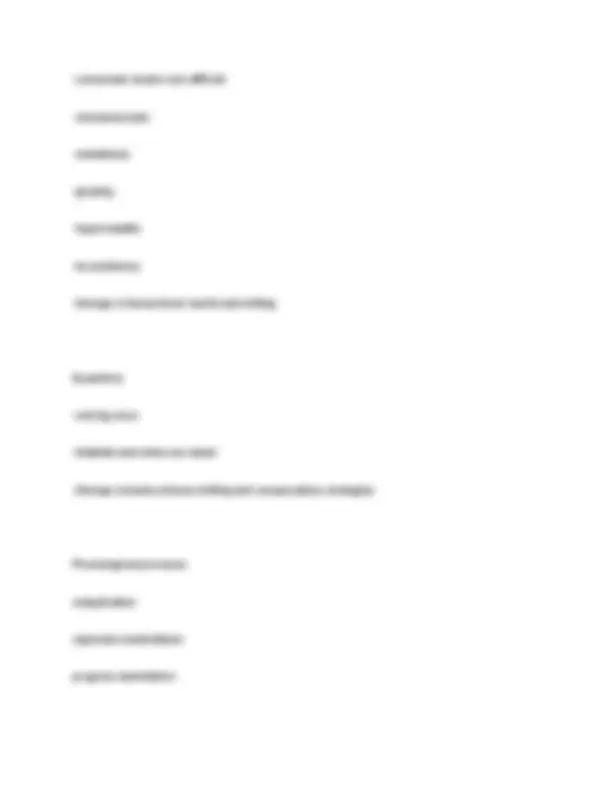
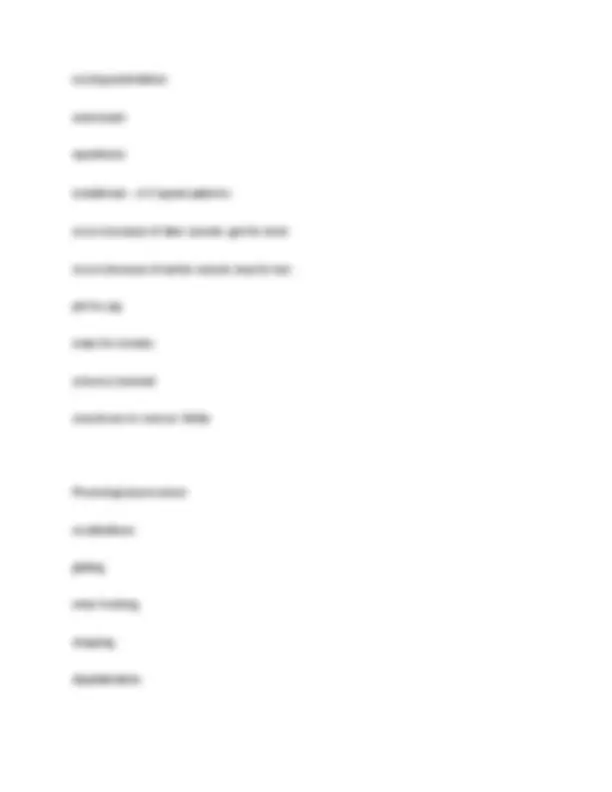
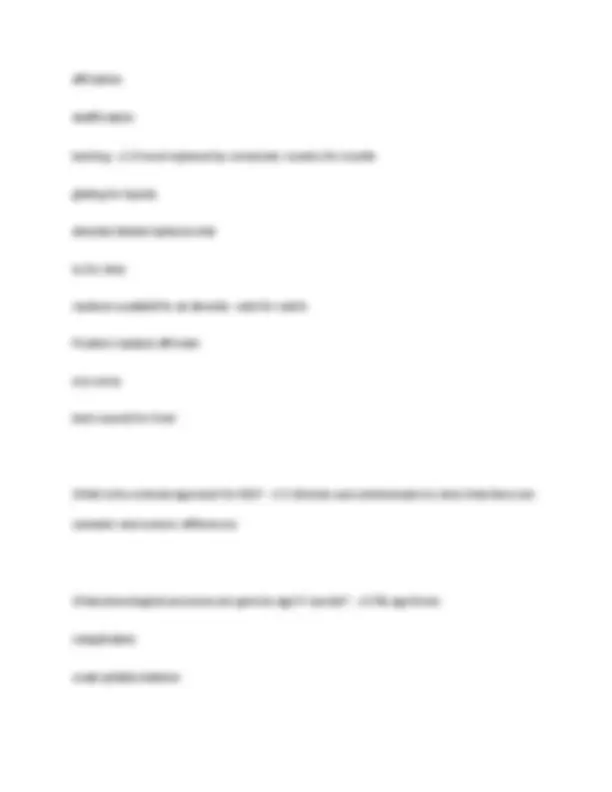
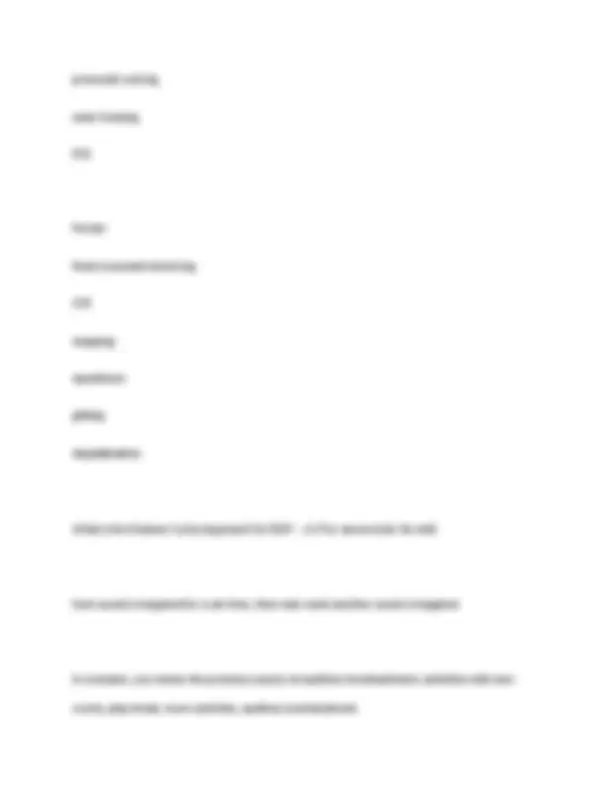
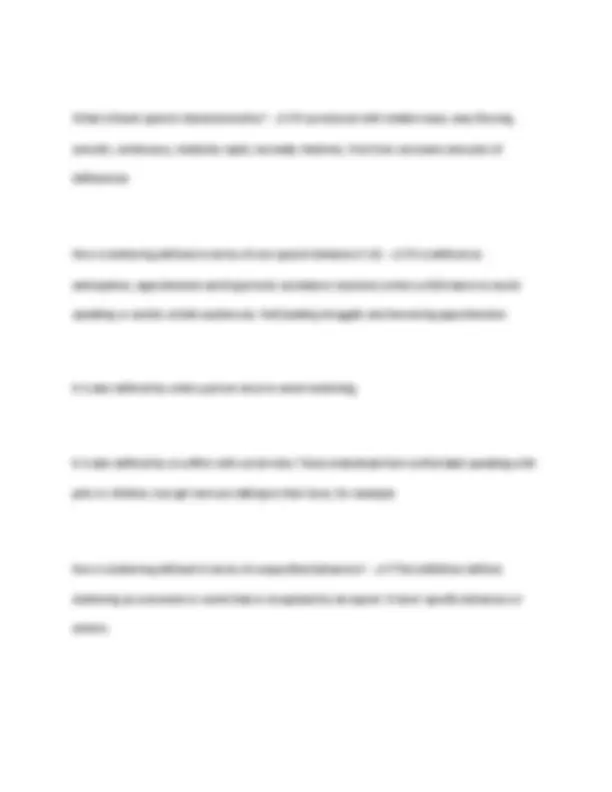
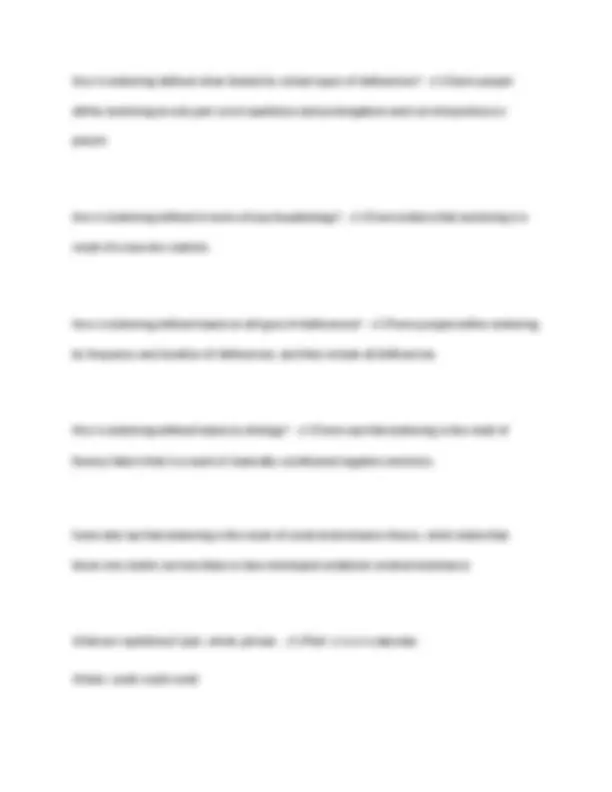
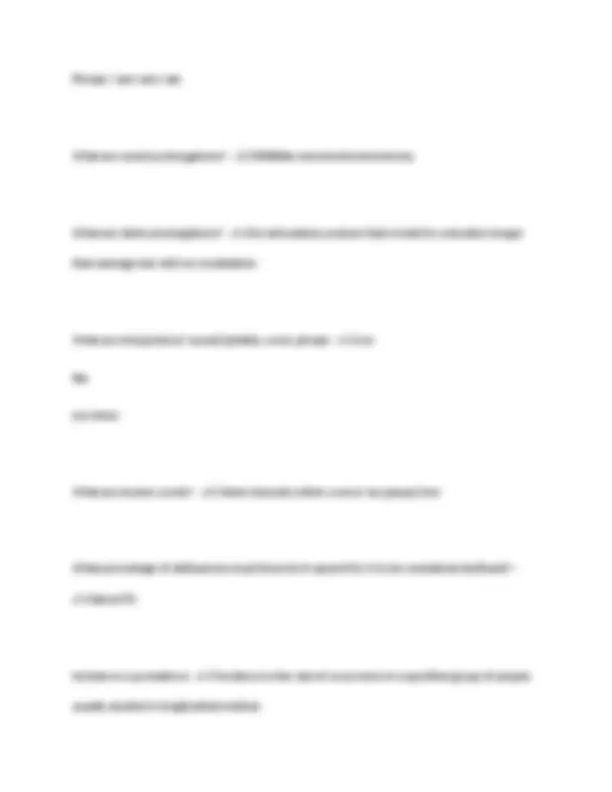
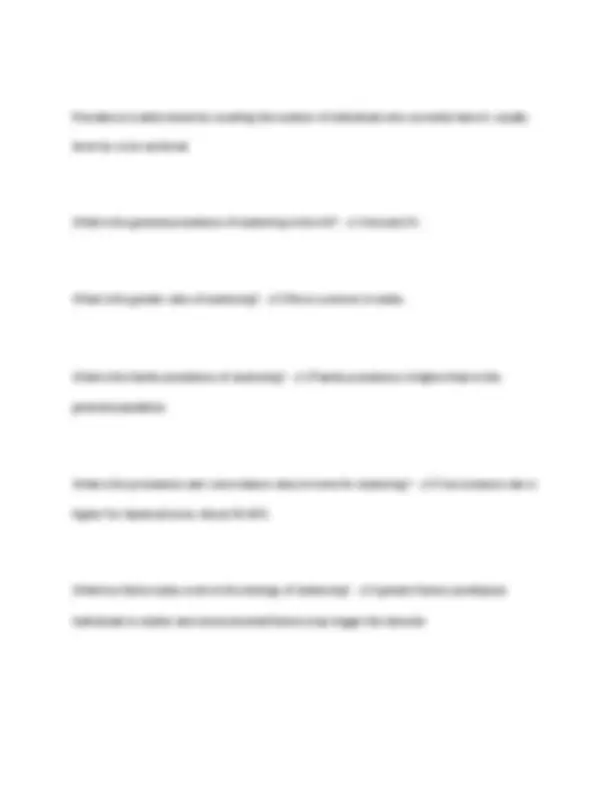
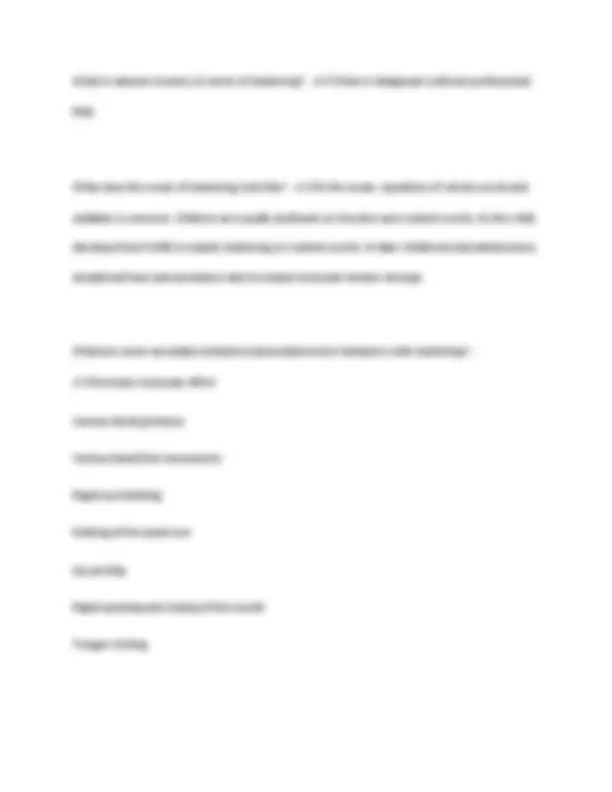
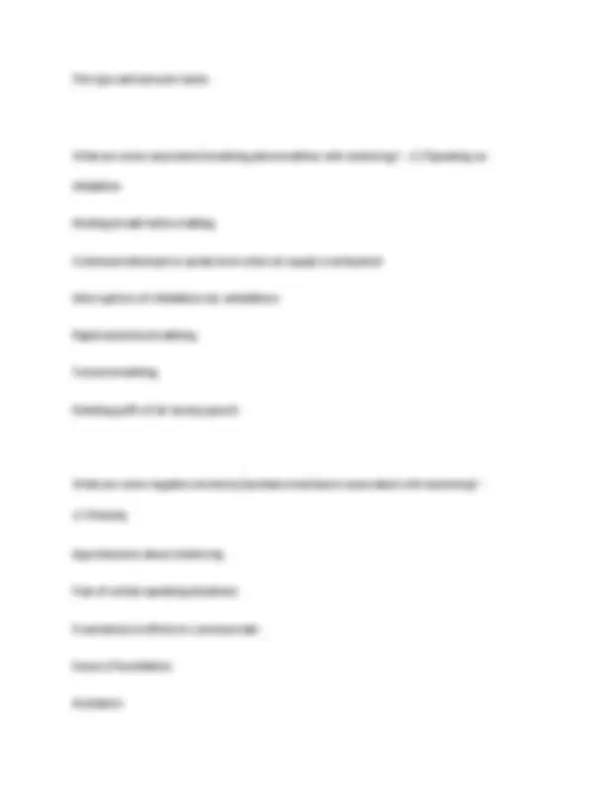
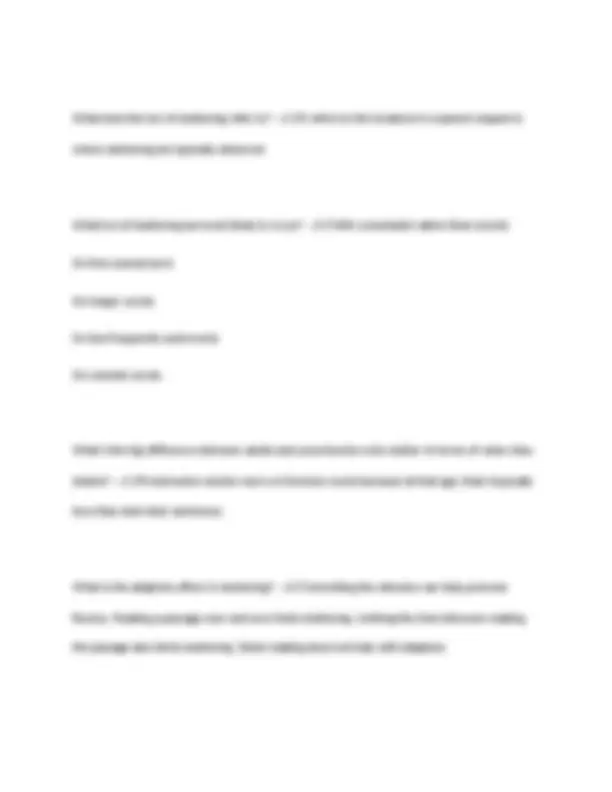
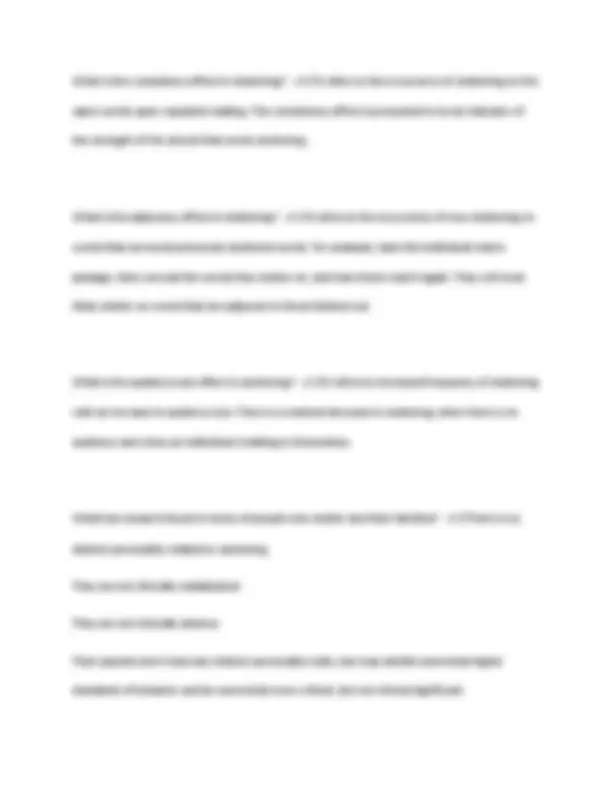
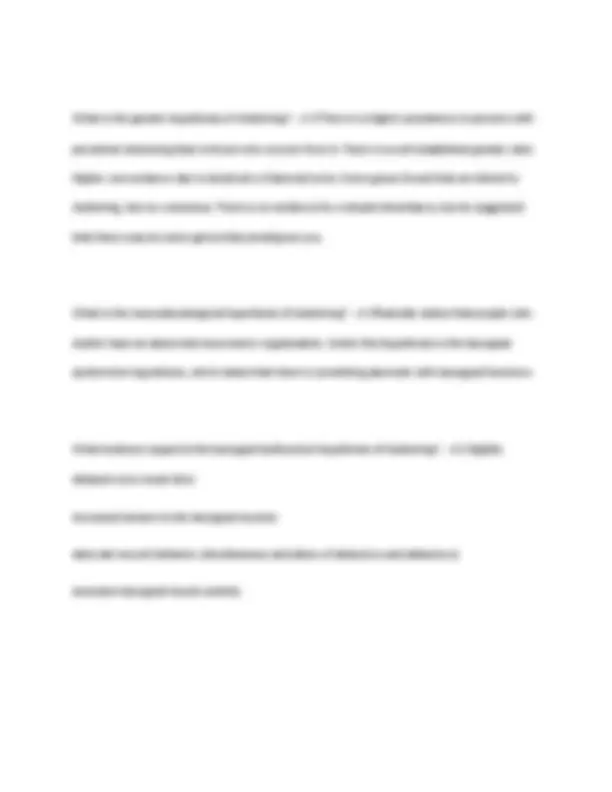
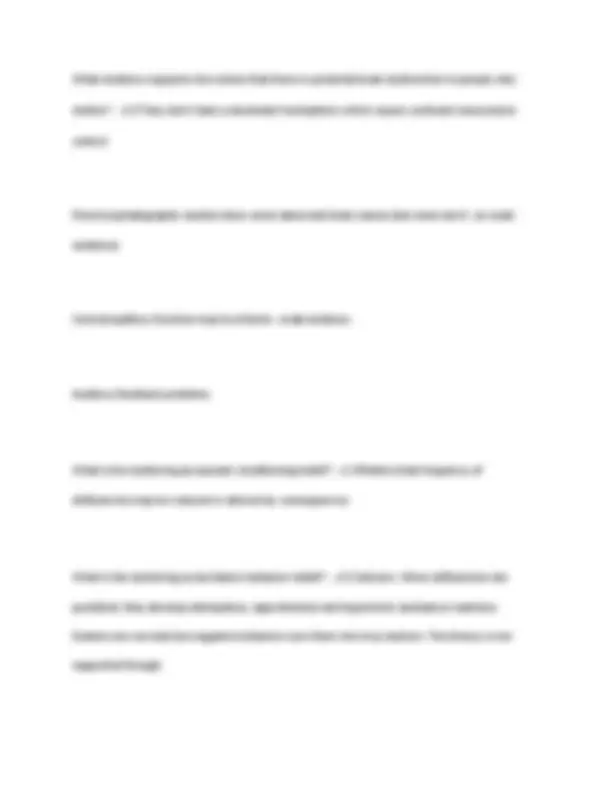
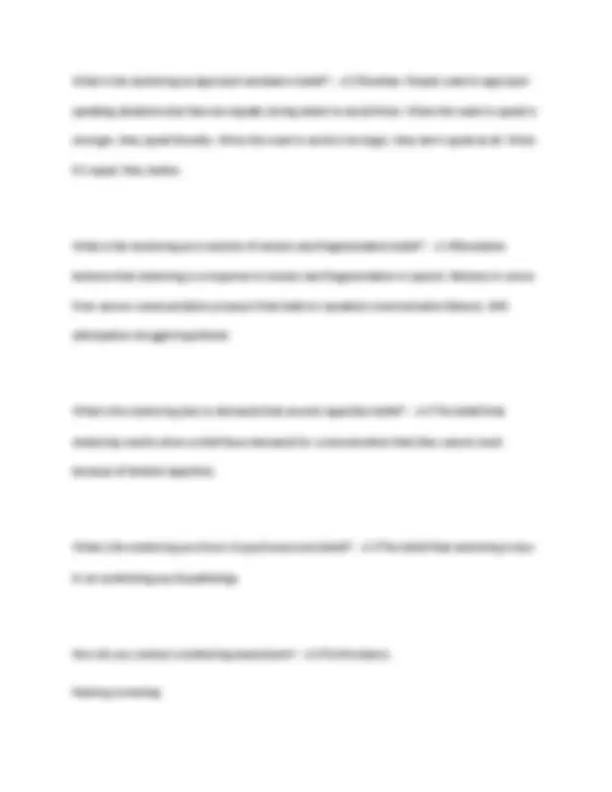
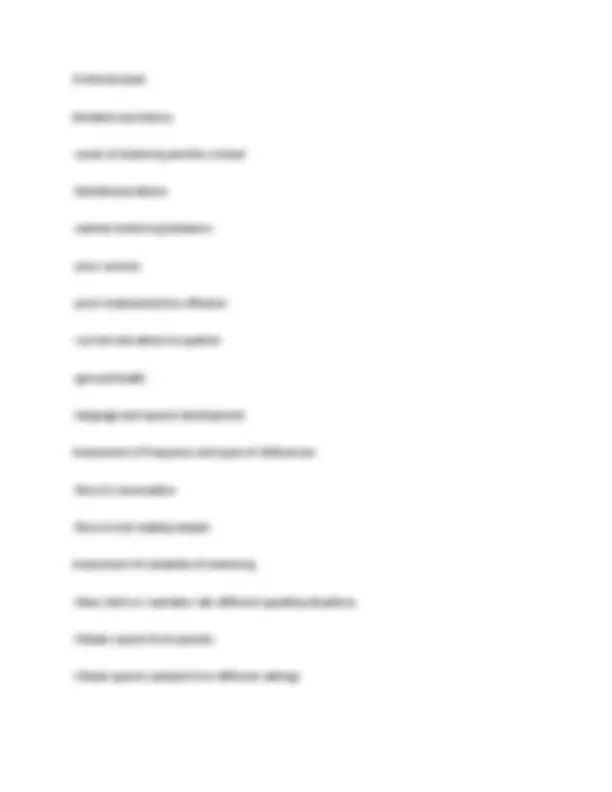

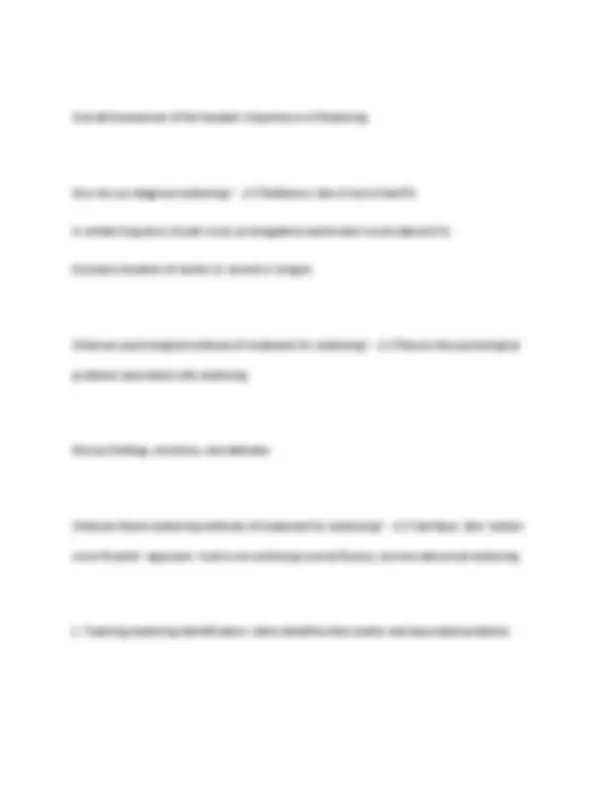
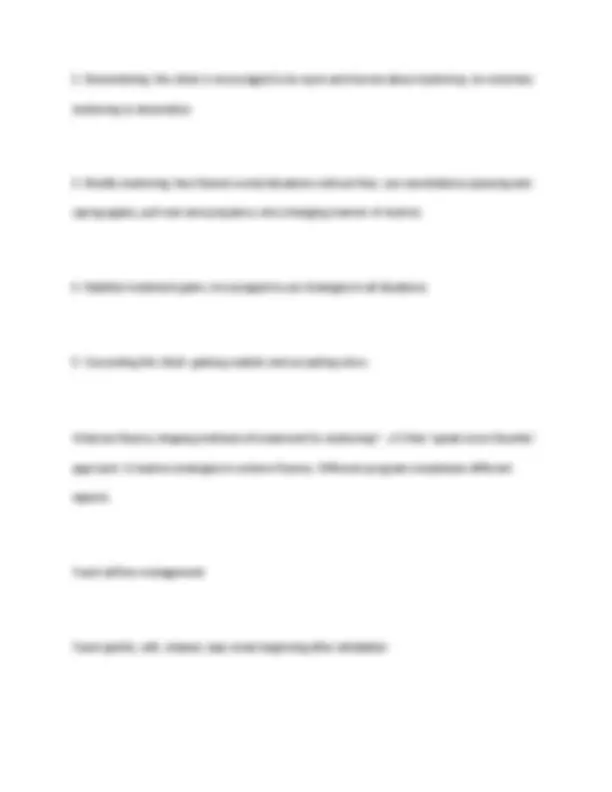
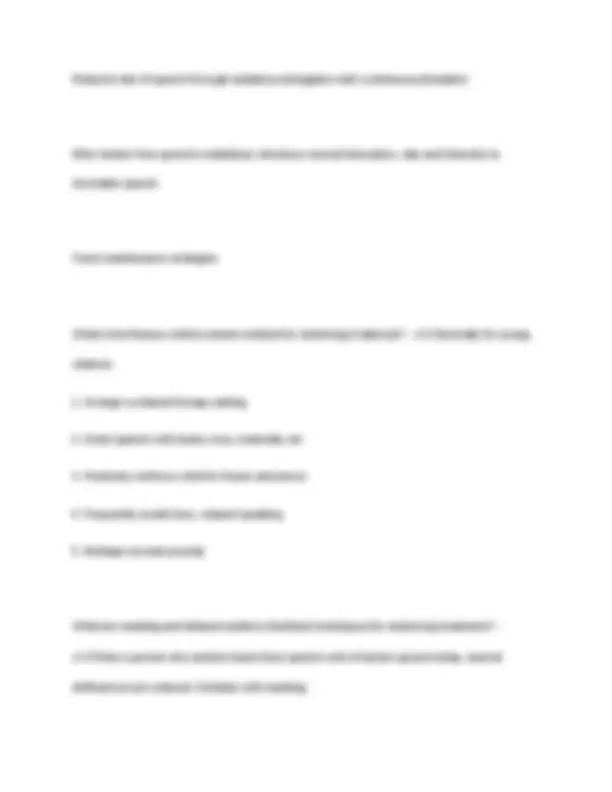
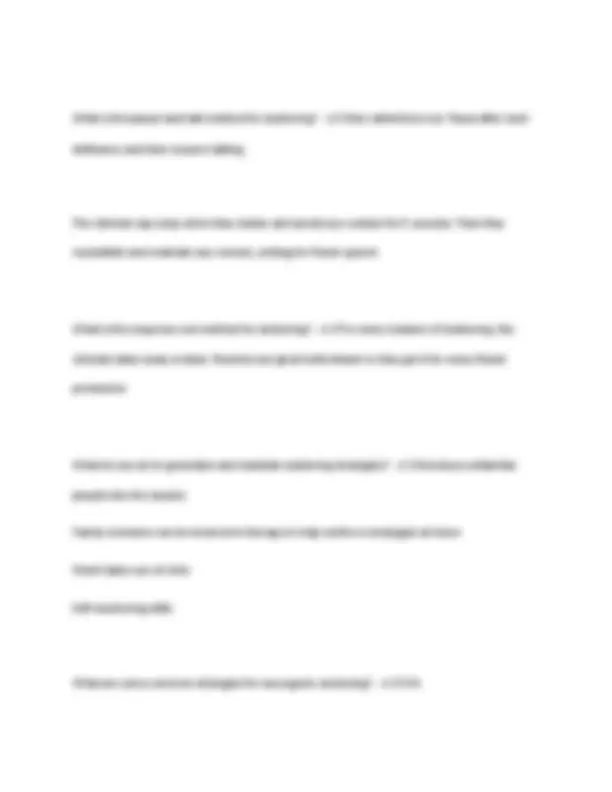
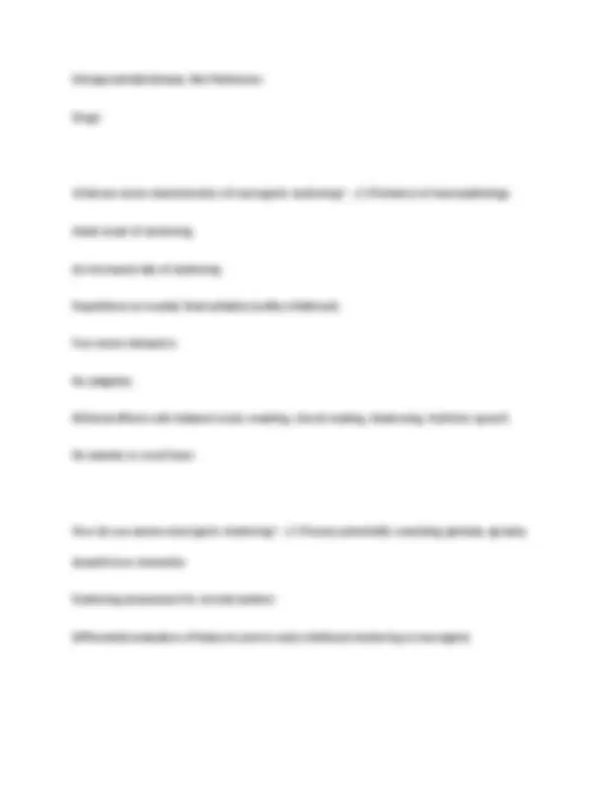
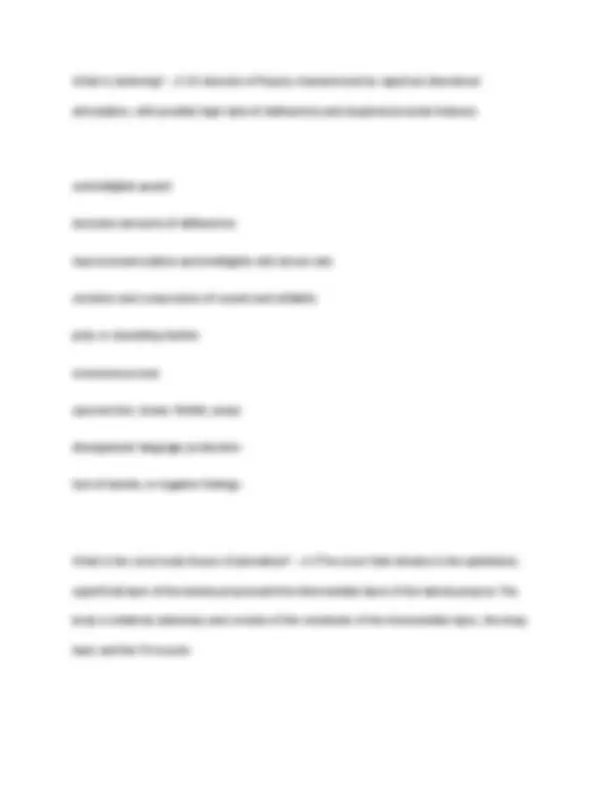
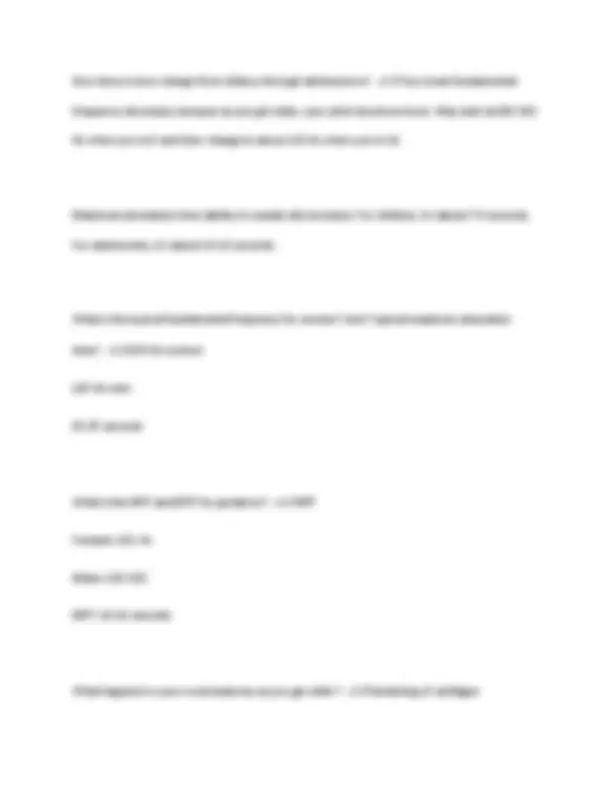
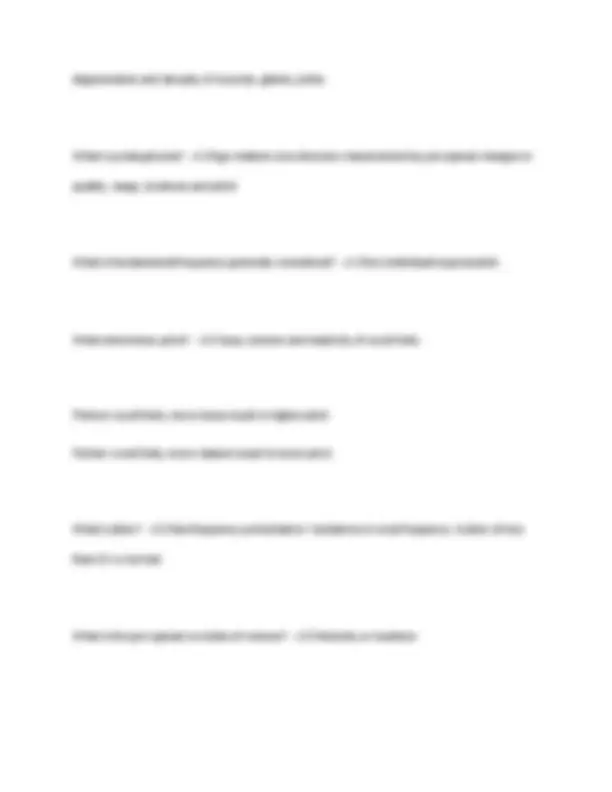
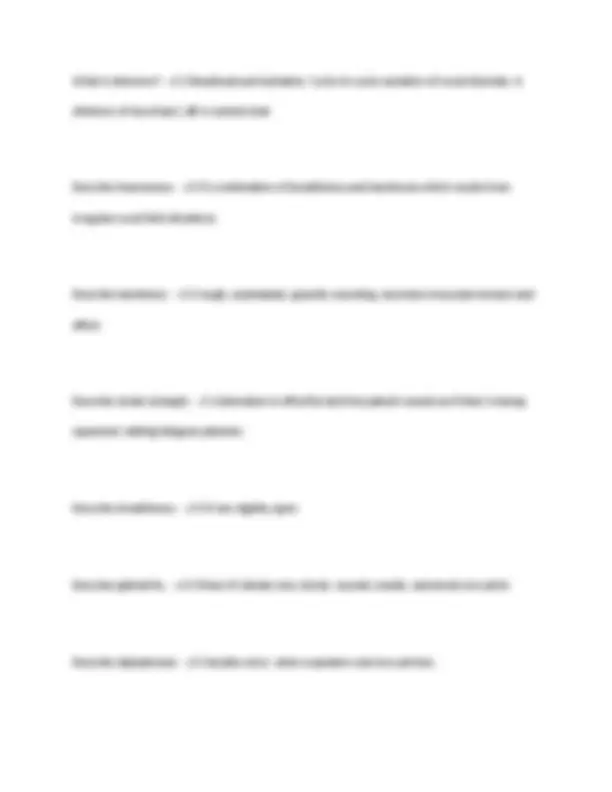
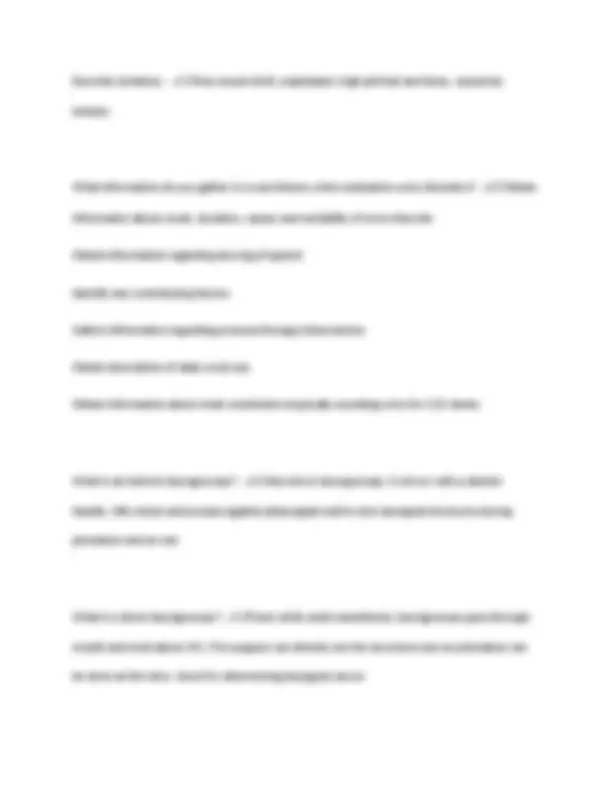
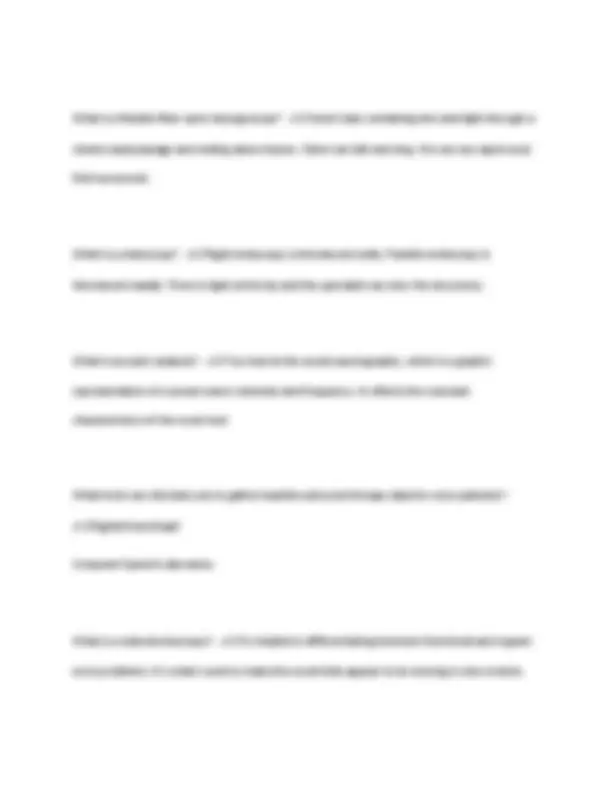
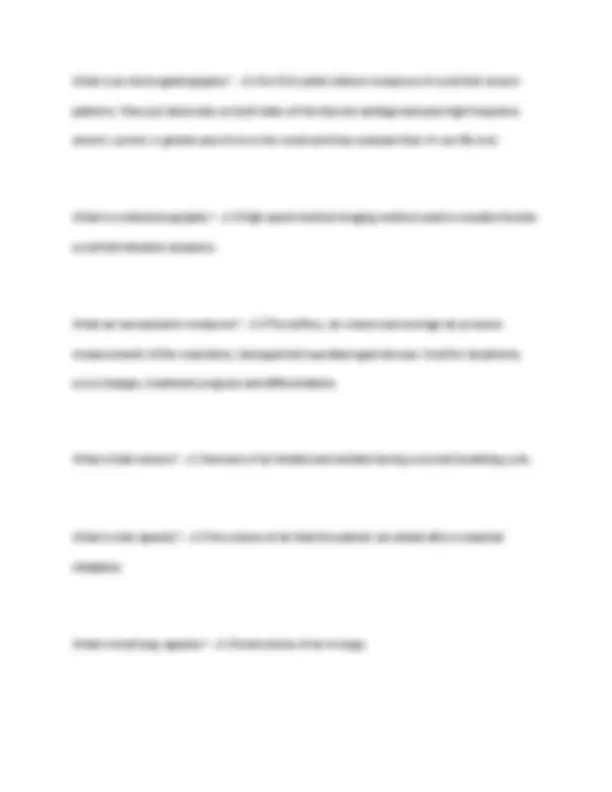
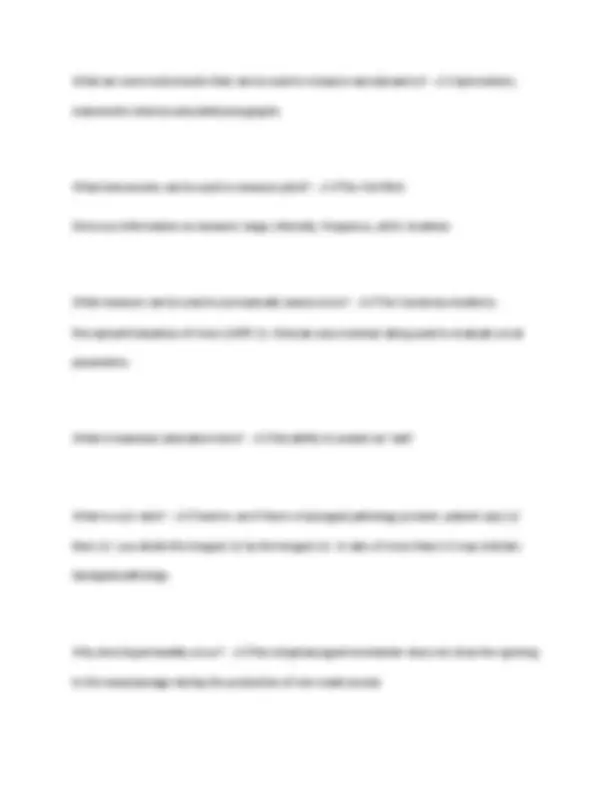
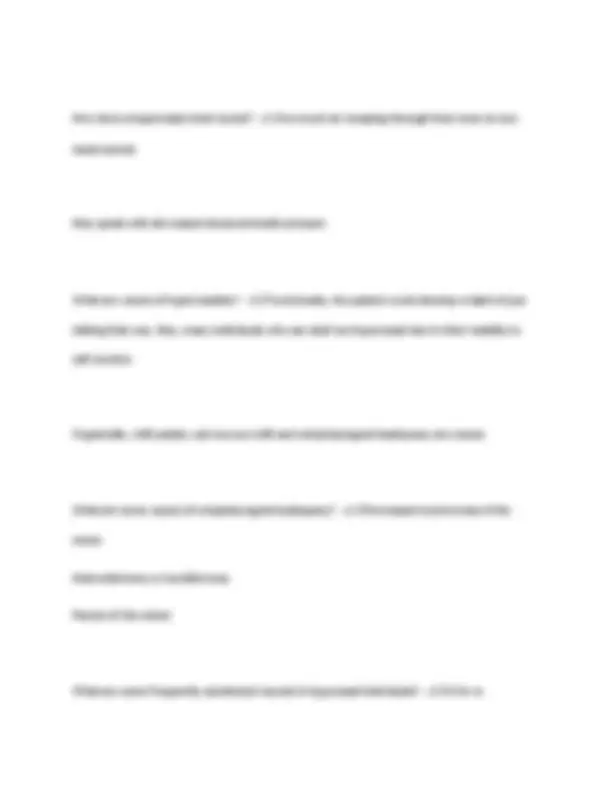
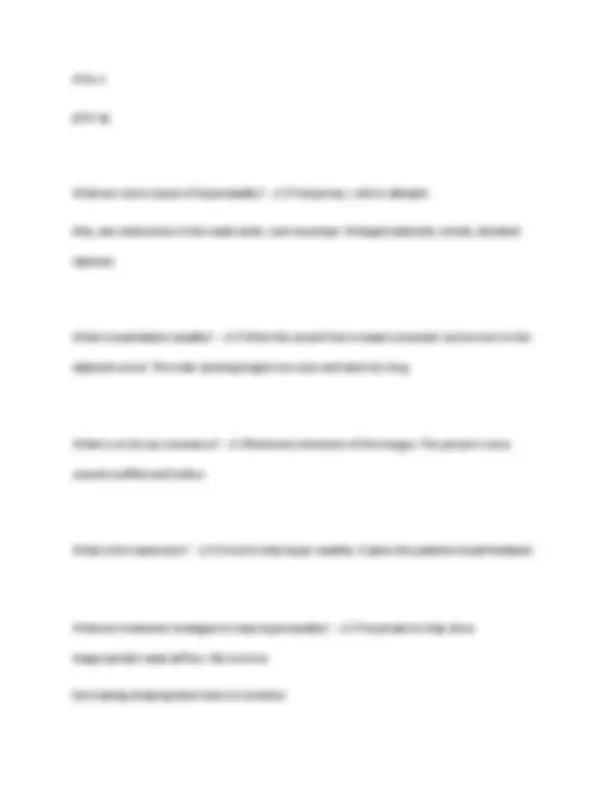
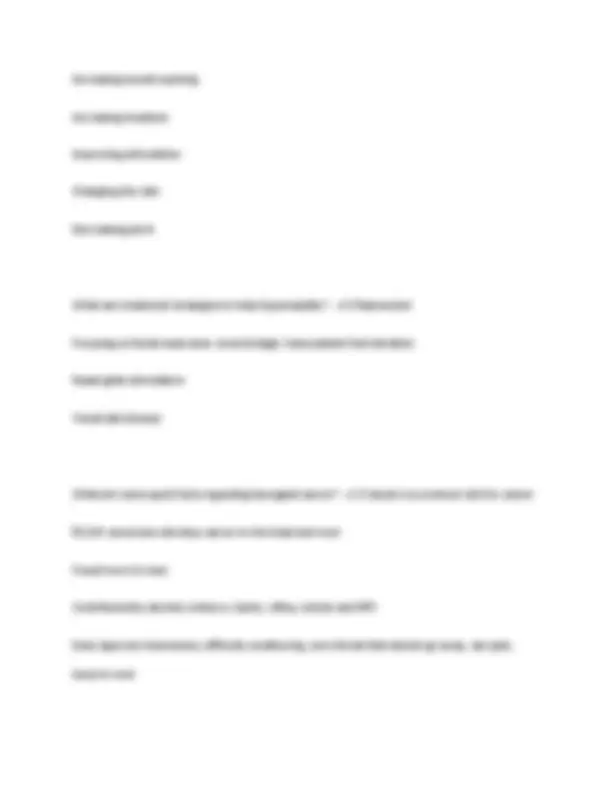
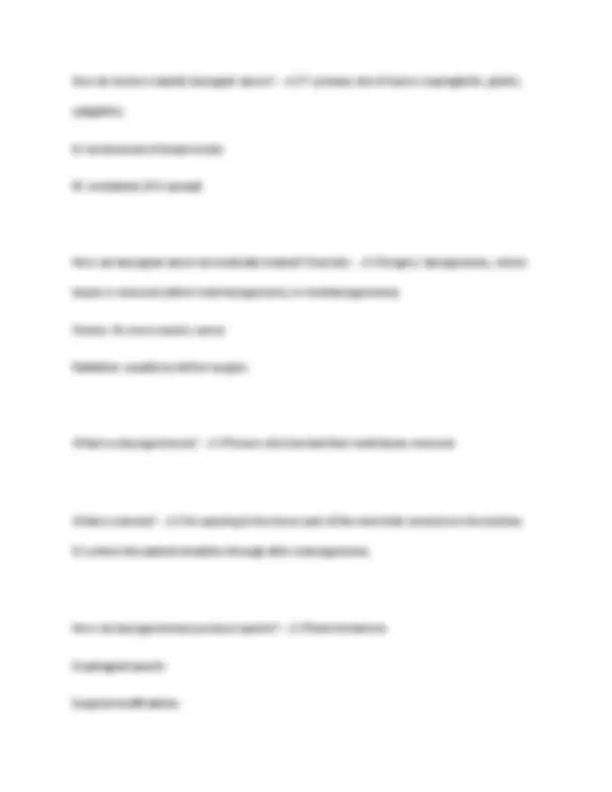
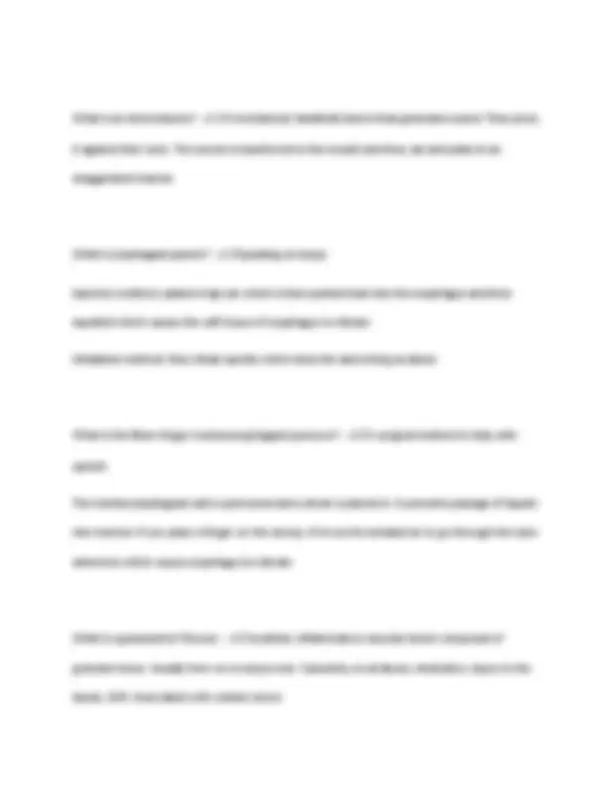
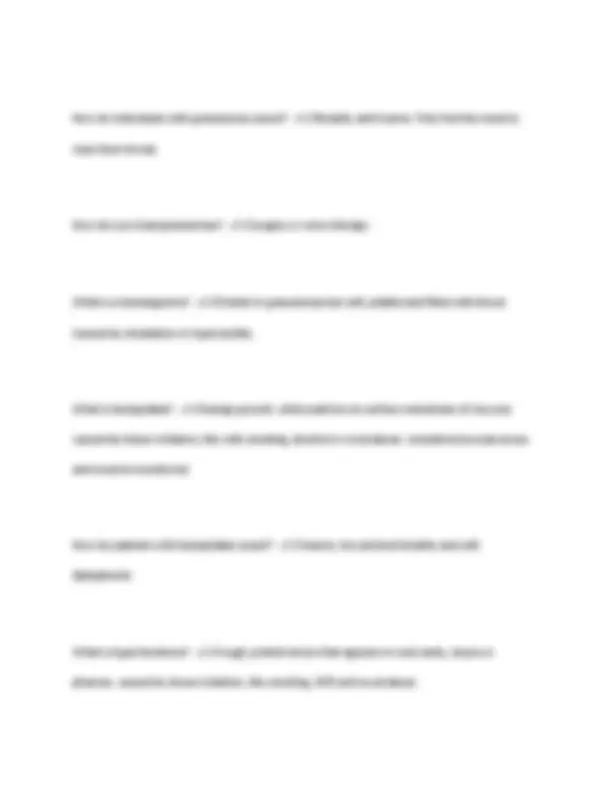
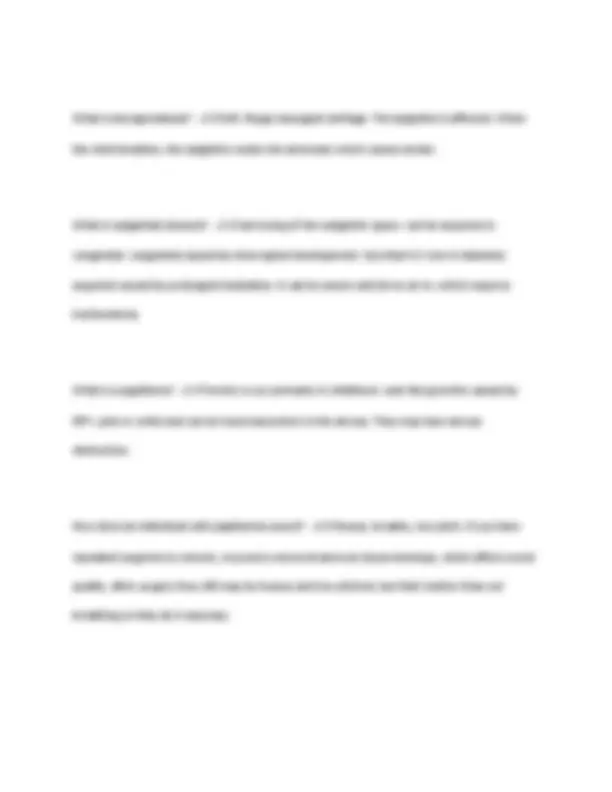
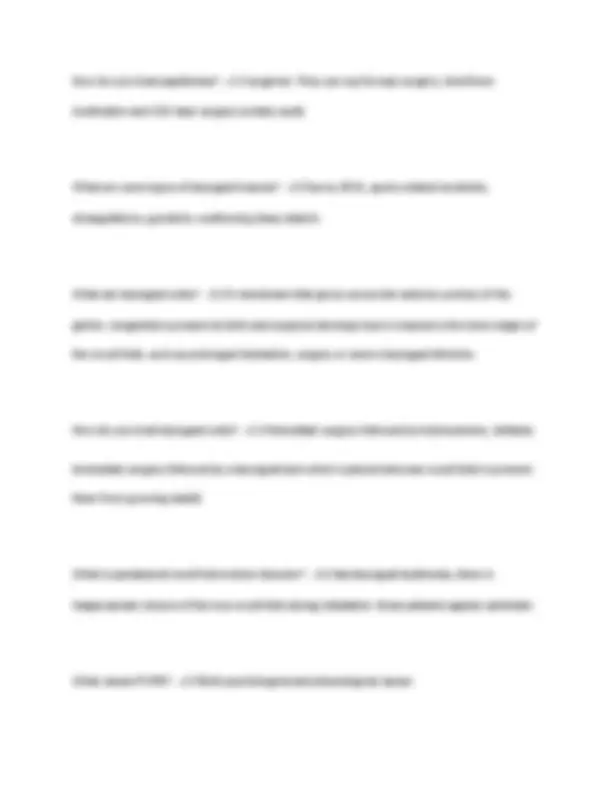
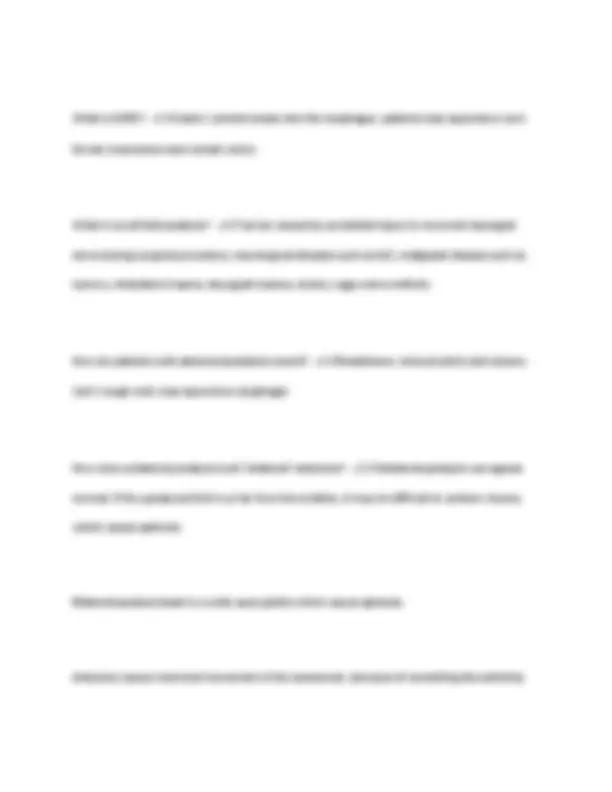
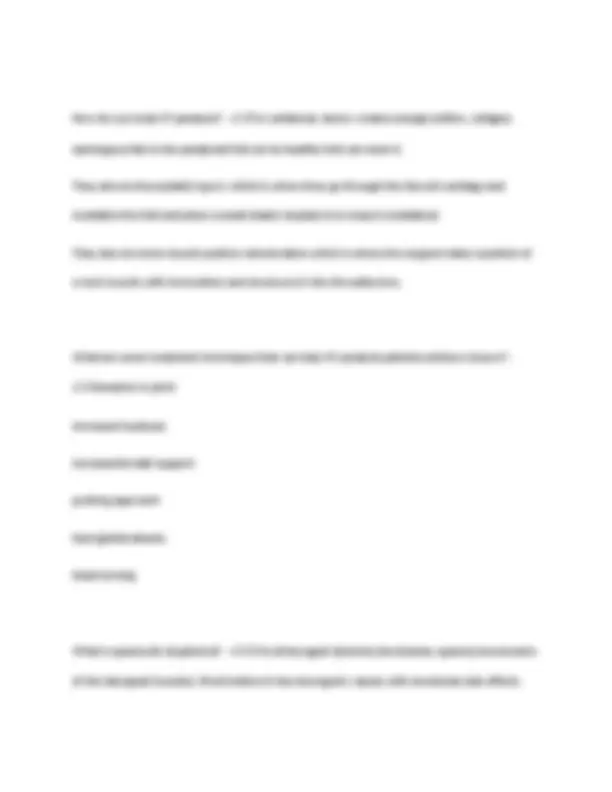
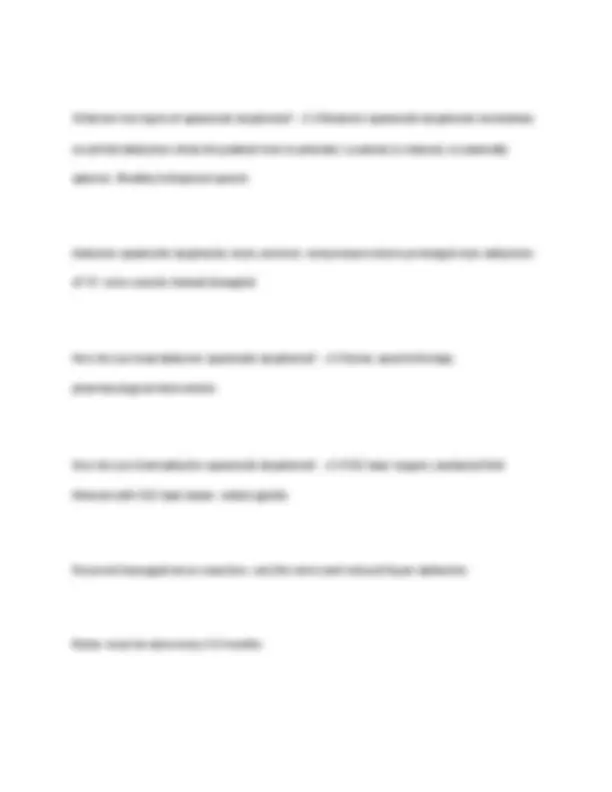
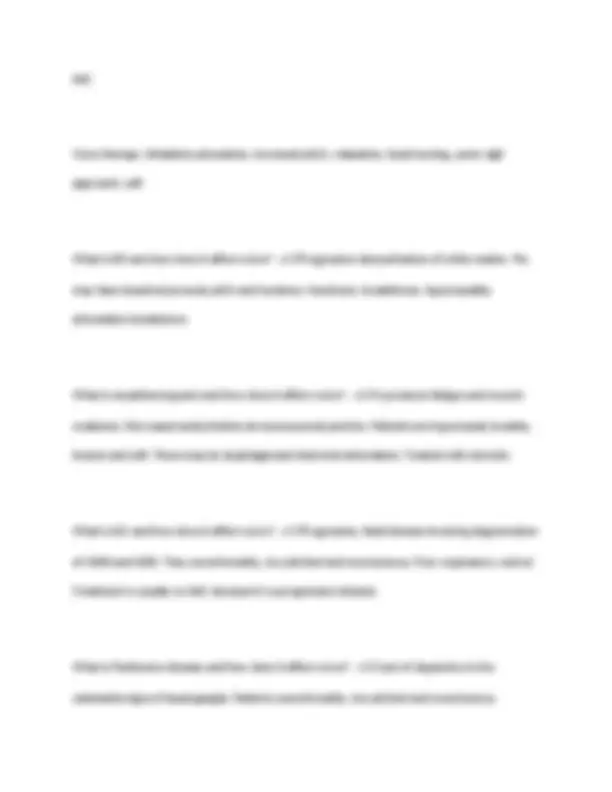
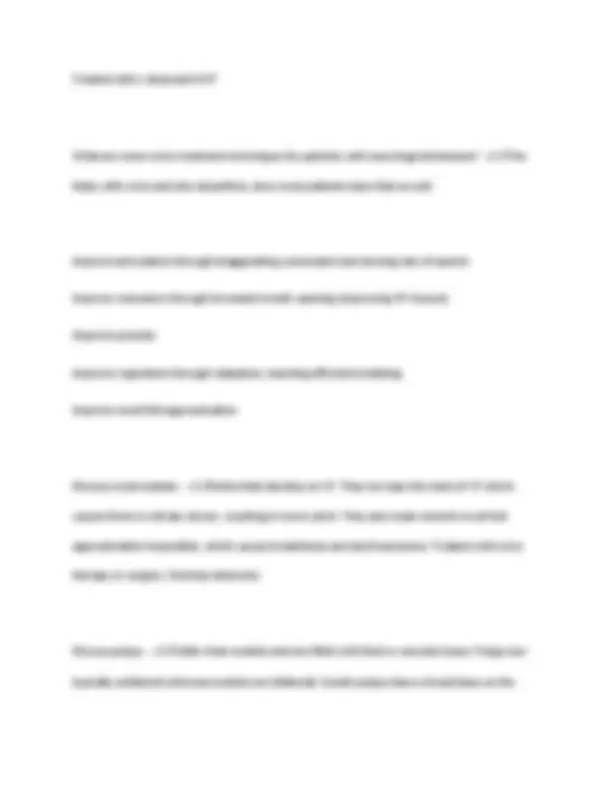
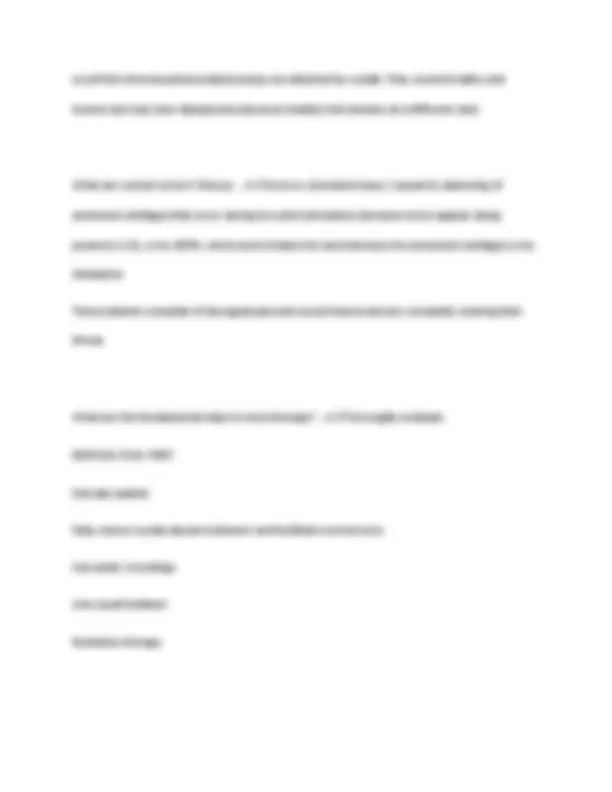
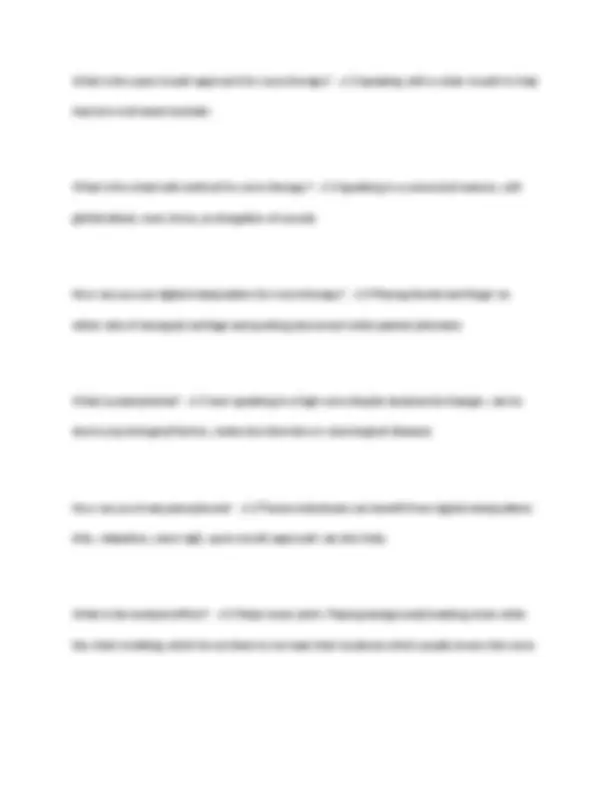
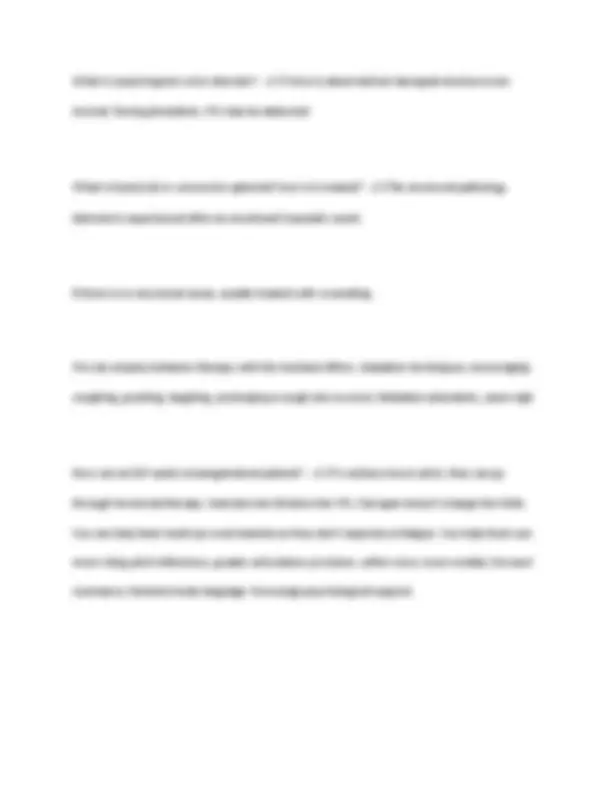
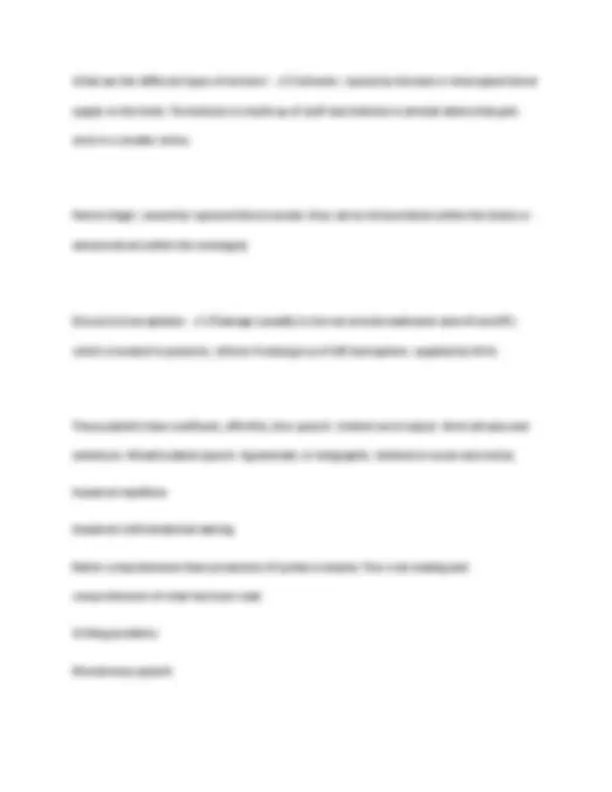
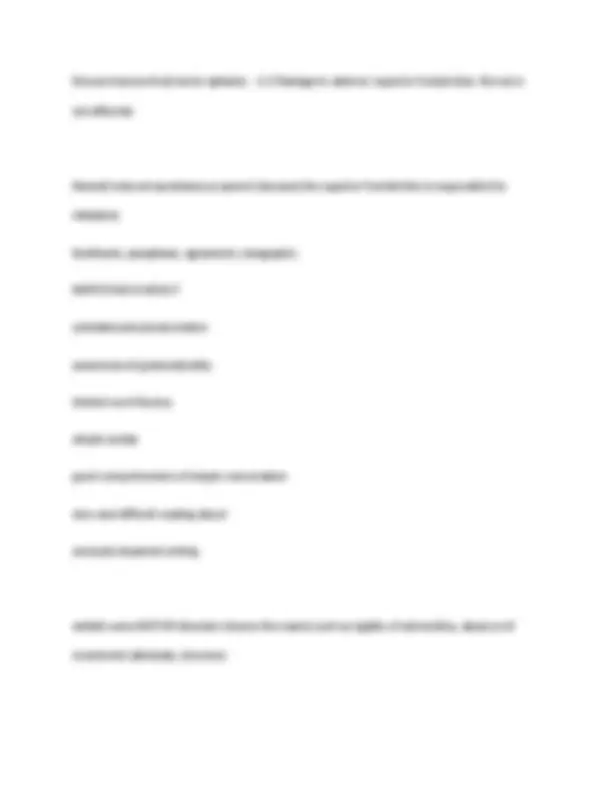
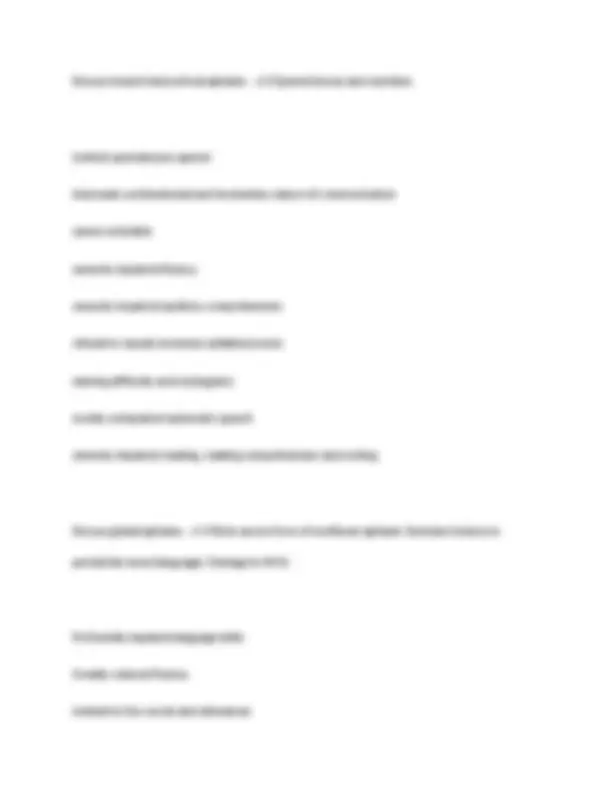
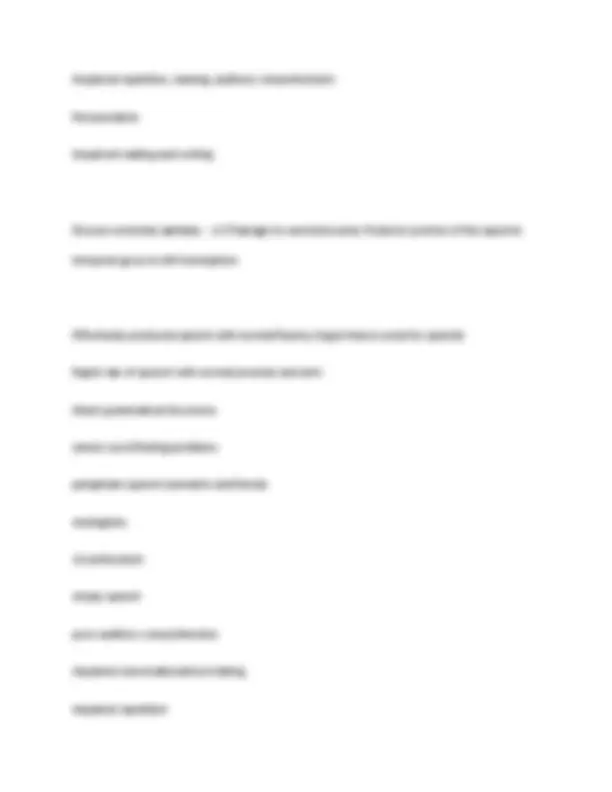


Study with the several resources on Docsity

Earn points by helping other students or get them with a premium plan


Prepare for your exams
Study with the several resources on Docsity

Earn points to download
Earn points by helping other students or get them with a premium plan
Community
Ask the community for help and clear up your study doubts
Discover the best universities in your country according to Docsity users
Free resources
Download our free guides on studying techniques, anxiety management strategies, and thesis advice from Docsity tutors
A comprehensive set of questions and answers related to the anatomy and physiology of the human body, specifically focusing on structures and functions relevant to speech production. It covers topics such as the muscles involved in respiration, the laryngeal cartilages, the cranial nerves, and the brain structures responsible for speech and language. A valuable resource for students preparing for the slp praxis exam or for those seeking a deeper understanding of the biological basis of speech.
Typology: Exams
1 / 194

This page cannot be seen from the preview
Don't miss anything!





























































































What are Piaget's stages of cognitive development? - ✔✔Sensorimotor (0-2) Preoperational (2-7) Concrete (7-11) Formal (11+) What are the muscles involved in inspiration? - ✔✔Diaphragm External intercostal muscles: raise the ribs up and out Serrates posterior superior: elevates rib cage Levator costarium brevis: elevates rib cage Levator costarum logies: elevates rib cage What are the muscles involved in expiration? - ✔✔Internal intercostal muscles Latissimus dorsi Rectum abdominis Transverse abdominis
Internal oblique abdominal Quadrates lumborum What structures are involved in respiration? - ✔✔Lungs Bronchi Trachea Spinal column Sternum: manubrium, corpus, xiphoid process Rib cage What is the myoelastic-aerodynamic theory? - ✔✔It's a theory of phonation. VF closure - > build up of sub glottal air pressure - > pressure blows the folds apart - > folds vibrate - > air moves through glottal opening, decreasing pressure - > folds sucked back together. What are the laryngeal cartilages? - ✔✔Hyoid bone Epiglottis Thyroid cartilage Cricoid cartilage
cricothyroid: lengthens and tenses vocal folds. oblique and transverse arytenoid: contract and pull arynteoids together for adduction. posterior cricoarynteoid: abducts lateral cricoarytenoid: adducts What are the extrinsic muscles involved in phonation? - ✔✔Elevators: Digastric Geniohyoid Mylohyoid Stylohyoid Hyoglossus Genioglossus Depressors:
Thyrohyoid Omohyoid Sternothryoid Sternohyoid How many/what type of teeth do we have? - ✔✔ 32 teeth: 4 incisors, 2 canine, 4 premolar and 6 molar What are the parts of the tongue? - ✔✔tip, blade, dorsum, root and lingual frenulum. What are the intrinsic muscles of the tongue? - ✔✔All innervated by CN 12 Superior longitudinal muscle: shortens tongue. turns tip upward. Inferior longitudinal muscle: shortens tongue. turns tip downward. Transverse muscle: elongates tongue Vertical muscle: narrows tongue
palatopharyngeus: lowers velum What are the structures of the hard palate? - ✔✔Pre maxilla Palatine process What are the muscles of the mandible? - ✔✔Elevators: Masseter Temporalis Pterygoid Depressors: Digastric Geniohyoid Mylohyoid What are the cranial nerves? - ✔✔Olfactory Optic
Oculomotor Trochlear Trigeminal Abducens Facial Vestibulocochlear Glossopharyngeal Vagus Spinal accessory Hypoglossal Trigeminal: function and damage - ✔✔Provides sensory information to face. It has three branches. Ophthalmic: nose and eyes Maxillary: lip, maxilla, upper cheek Mandibular: lower teeth Provides motor information to the jaw.
Damage could result in loss of taste, difficulty swallowing and damage to the gag reflex. Vagus: function and damage - ✔✔Provides sensory and motor information to some muscles of larynx and pharynx. There is the recurrent laryngeal nerve which is responsible for intrinsic muscles of larynx (except cricothryoid) The pharyngeal branch is responsible for the pharyngeal constrictors and most muscles of velum (except tensor tympani) Damage could result in swallowing issues, velum paralysis and voice problems Spinal accessory: function and damage - ✔✔Provides motor information to head and shoulder and some soft palate. Damage could result in neck weakness, inability to turn head, shrug or raise arms
Hypoglossal: function and damage - ✔✔Provides motor information to all intrinsic and some extrinsic muscles of the tongue. Damage could result in tongue paralysis, unintelligible speech and swallowing issues Describe spinal nerves. - ✔✔Cervical: 8 pairs. Neck Thoracic: 12 pairs. Chest Lumbar: 5 Sacral: 5 Coccygeal: 1 What is the temporal lobe responsible for? - ✔✔Processing hearing information and comprehending speech. Contains primary auditory cortex, Heschl's gyrus and Wernicke's area. What is the frontal lobe responsible for? - ✔✔Important for planning, decision making, etc.
Think: COORDINATION Basal ganglia: function and damage - ✔✔The basal ganglia is a highly complex system of neural pathways that receive input and relay messages back to the brain via the thalamus. Damage to the BG results in unusual body postures, dysarthria, involuntary movements, changes in body tone. It's part of the extrapyramidal system which regulates motor movements. Discuss the brainstem and its structures. - ✔✔Contains midbrain, pons and medulla The midbrain, aka mesencephalon, controls motor and sensory reflexes. The pons, aka metencehpalon, transmit information relative to movement from the hemispheres to the cerebellum. they act as a message station. The medulla houses several cranial nerves for speech production
Discuss the diencephalon and its structures. - ✔✔It is located above the midbrain. Thalamus: relays sensory information to various parts of the brain. Hypothalamus: integrates actions of the ANS, such as hunger, thirst, emotions. Discuss the automatic nervous system. - ✔✔The sympathetic system is responsible for the "fight or flight". Causes heart to accelerate, raises blood pressure. increases blood flow to various areas of the body. The parasympathetic system is what relaxes you. Efferent vs Afferent - ✔✔Efferent are motor neurons that carry nerves away from CNS to muscles Afferent are sensory neurons that carry nerves toward CNS.
Damage results in involuntary movement, bizarre postures, unusual movement patterns. Examples include spasms, tremors, myoclonus and dystonia. Discuss the meninges. - ✔✔Protect the brain. Pia Arachnoid Dura Discuss the cerebral ventricles. - ✔✔The choroid plexus produces cerebrospinal fluid, which is responsible for nourishment, removal of waste and protection, and it travels via the ventricles. There are lateral ventricles, the third ventricle and the fourth ventricle. Hydrocephalus is a buildup of CSF. Discuss cerebral blood supply and the Circle of Willis - ✔✔The aorta is the main artery of the heart. The aorta branches into the carotid arteries and subclavian arteries. The subclavian arteries branch into right and left vertebral arteries. The two vertebral arteries enter the skull and join to form the basilar artery, which branches out to form cerebral arteries.
The carotid arteries go up the neck and branch into internal and external carotid arteries. Then you have the middle cerebral artery and anterior cerebral artery which supply blood to several areas of the brain. What are the three types of connecting fibers? - ✔✔projection: connect between cortex and subcortical structures association: within hemispheres commissural: between hemispheres (corpus callosum) What is language? What is phonology? What are phonemes? What are allophones? - ✔✔Code or system used to express concepts formed through exposure and experience Scientific study of sound systems and patterns Smallest unit of sound that can affect meaning
What does back describe? - ✔✔Sounds that are created by retraction of the tongue. /k/ /g/ and ng What does continuant describe? - ✔✔Sounds that are produced with an incomplete point of constriction. The airflow is not stopped. The speaker produces the sound until out of breath. These include the fricatives, glides, liquids and laterals and NOT nasals, stops and affricates What does anterior describe? - ✔✔Sounds that are produced with a point of constriction located anteriorly than that of [sh]. What does coronal describe? - ✔✔Sounds that are produced when the tongue blade is raised above the normal schwa position. What does round describe? - ✔✔Sounds that are produced with round lips, such as /r/ and /w/ What does strident describe? - ✔✔Sounds that are produced by forcing air through a small opening. These sounds are the affricates and fricatives (minus th)
What does sonorant describe? - ✔✔Sounds that are produced by allowing airstream to pass uninterrupted through oral or nasal cavity. These are the nasals, glides and liquids What are syllabic sounds? - ✔✔Sounds that serve as the nucleus in a syllable. All vowels, nasals and liquids What are obstruent sounds? - ✔✔Sounds that have notable air obstruction. All affricates, fricatives and stops. What are sibilant sounds? - ✔✔Sounds that have longer duration and more stridency than other consonants. Affricates and fricatives. What are approximants sounds? - ✔✔Glides and liquids What is simple harmonic motion? - ✔✔The back and forth movement of particles when the movement is symmetrical and periodic. Also known as a sine wave